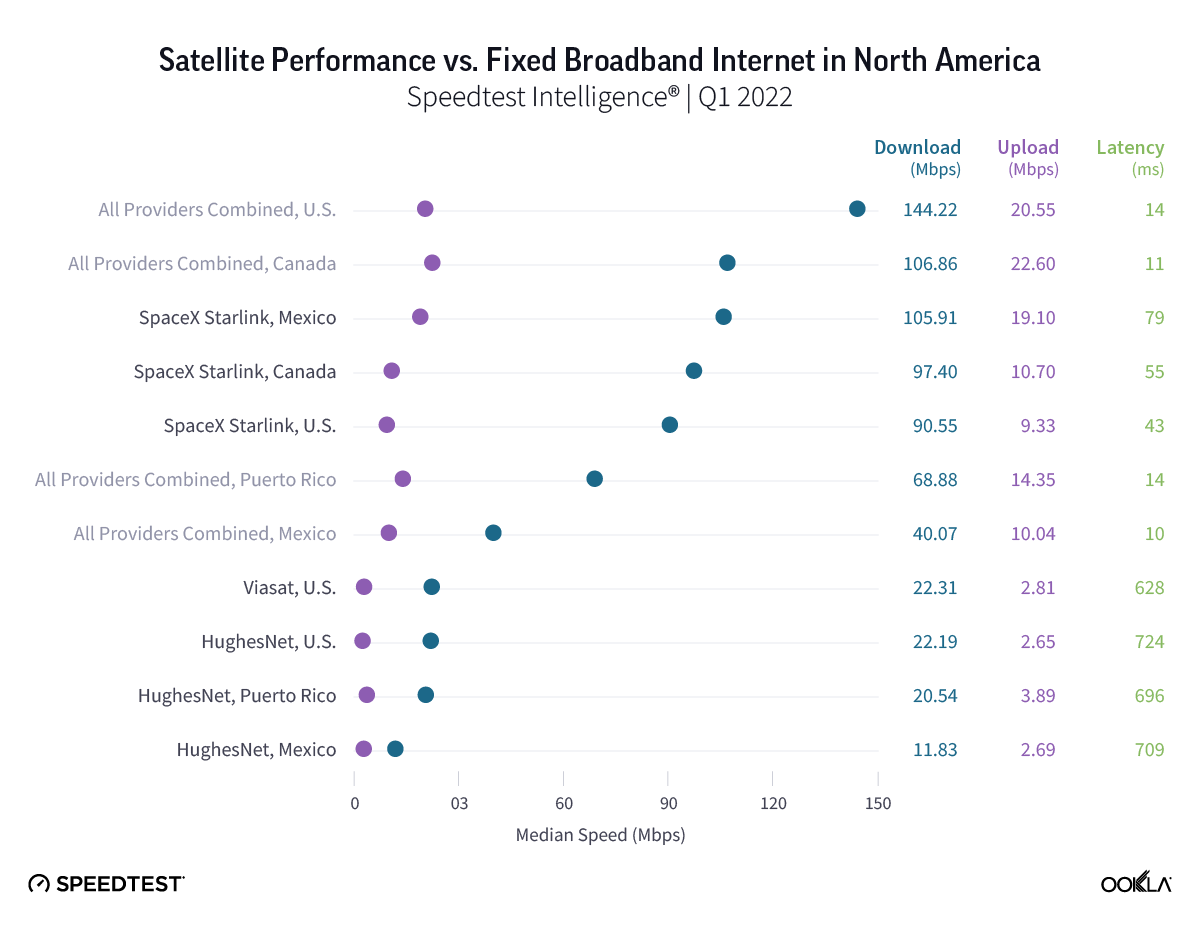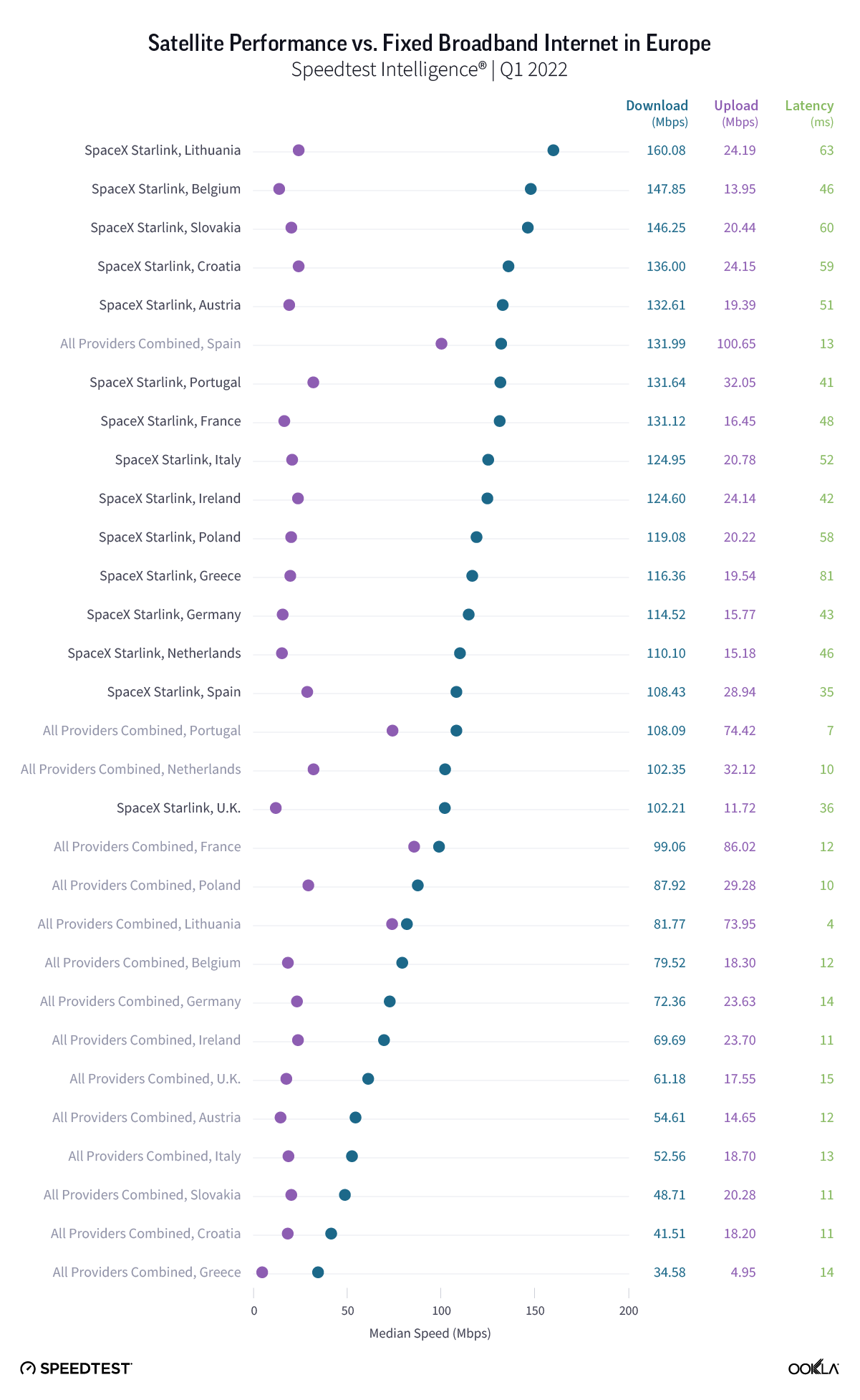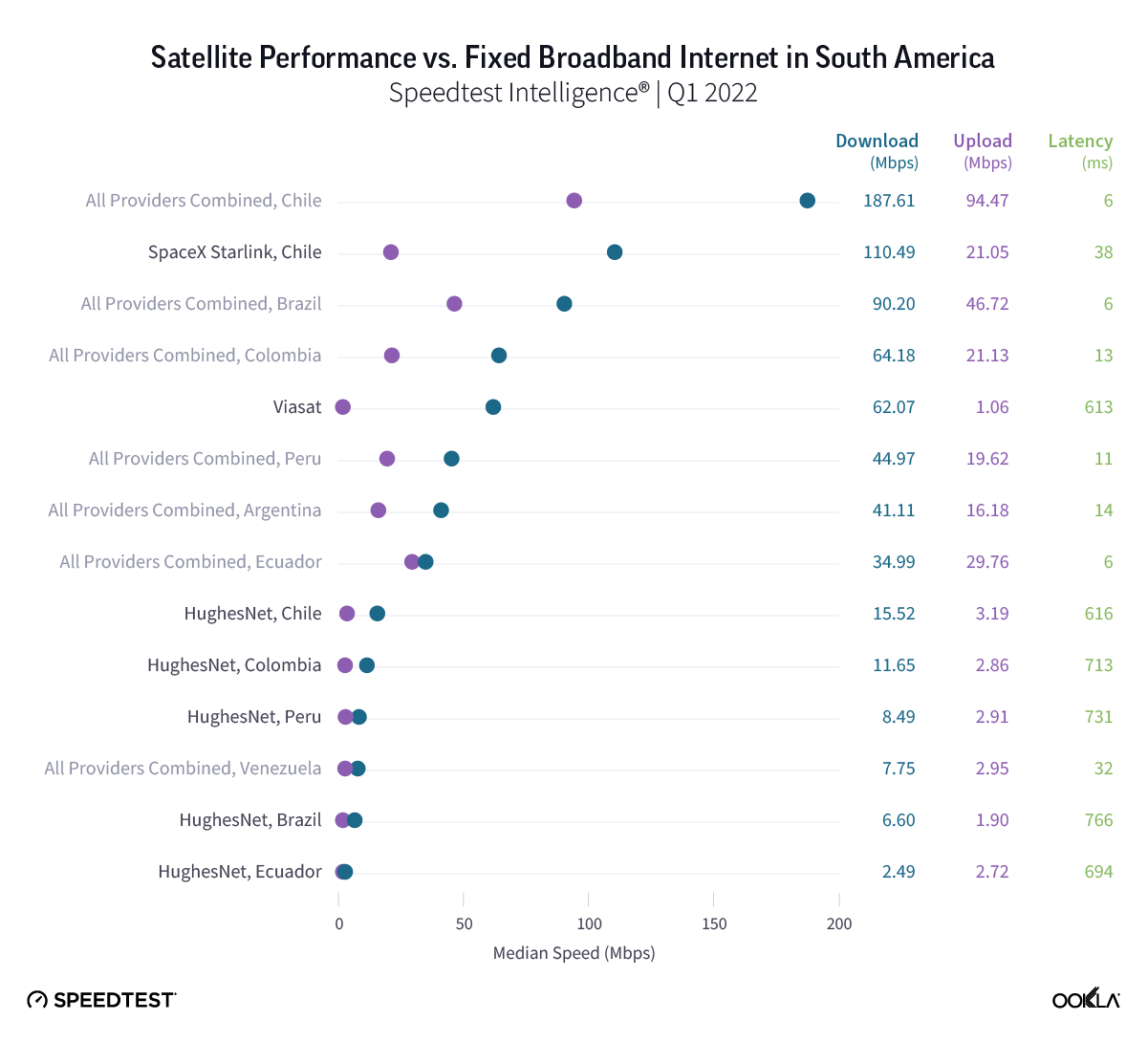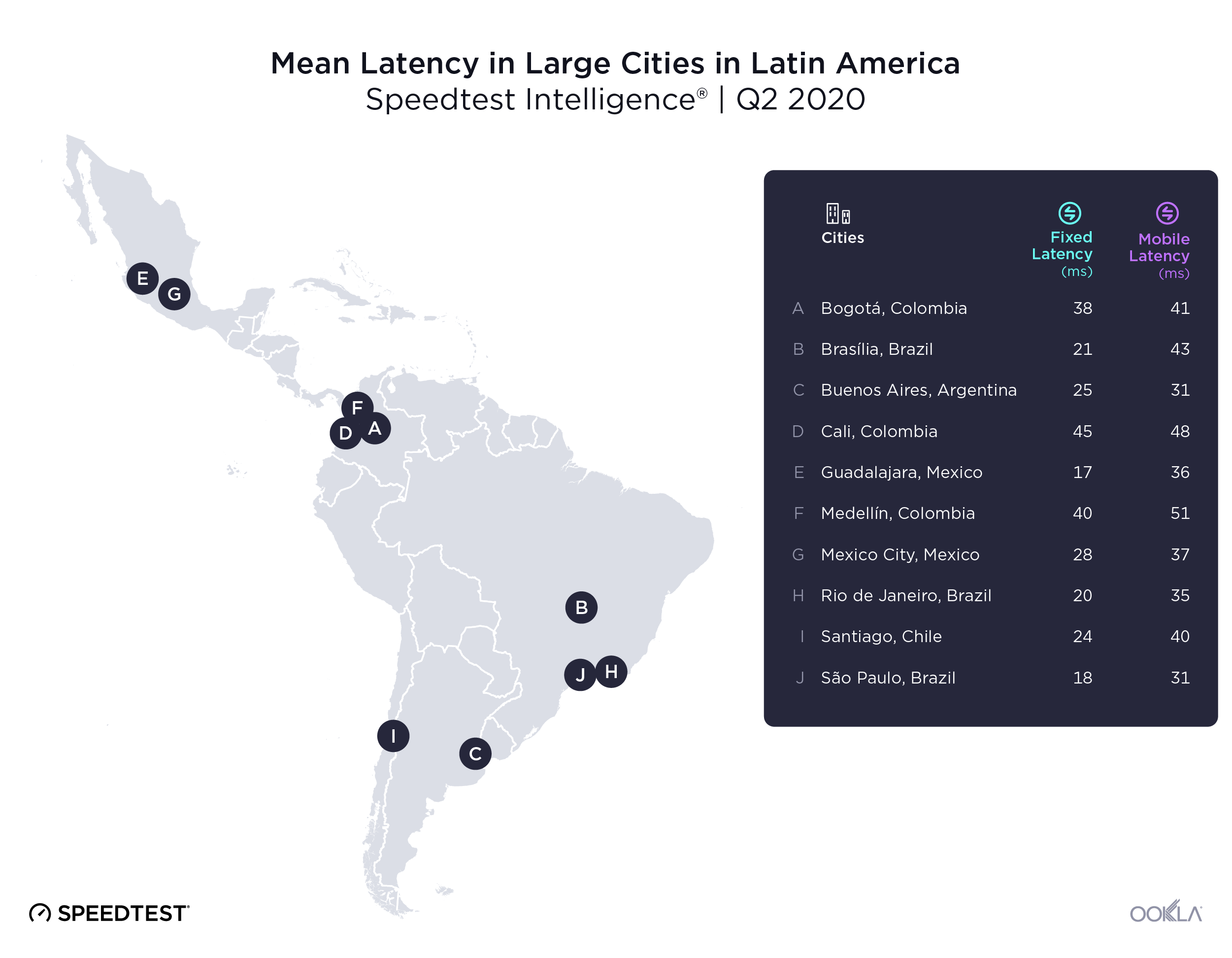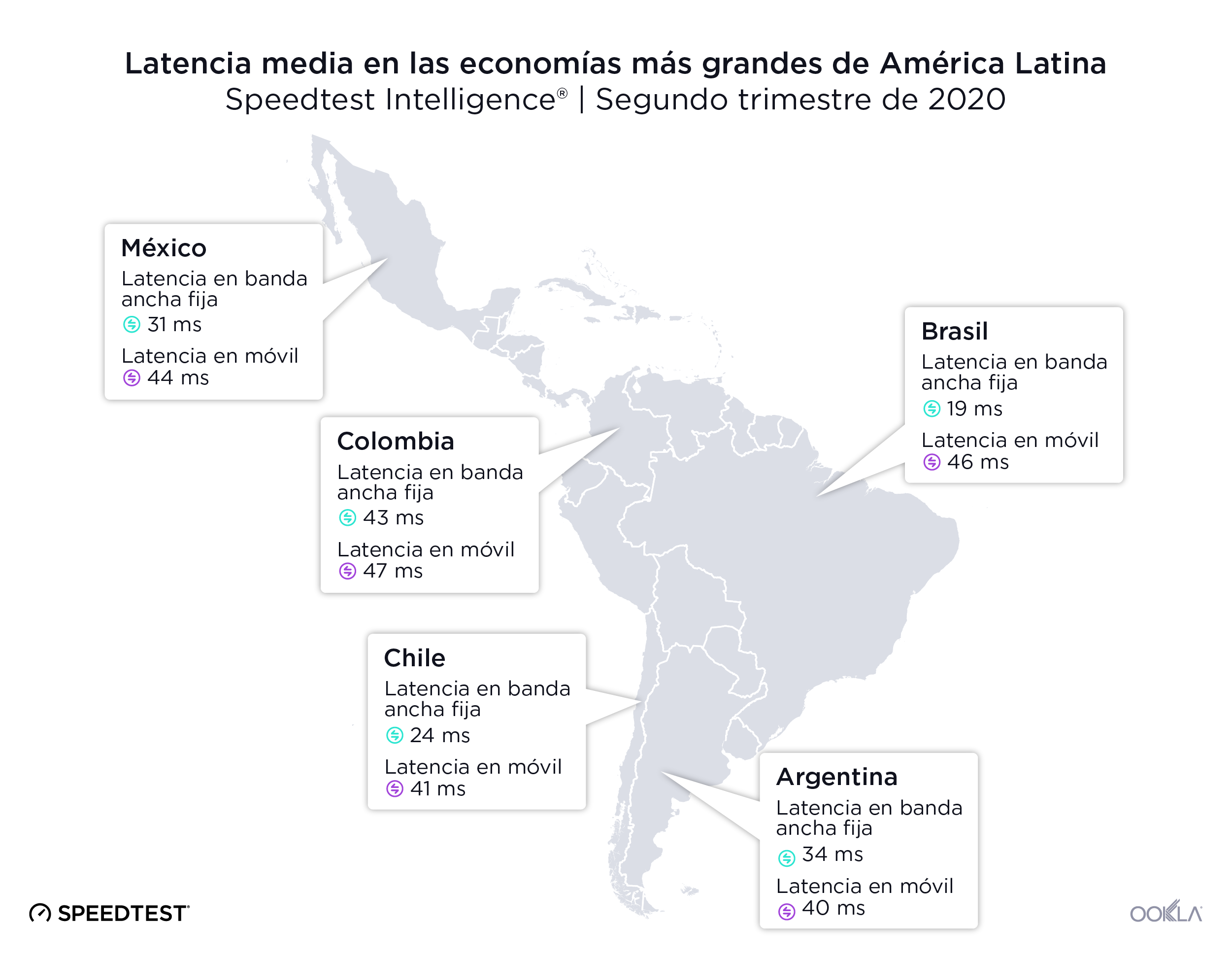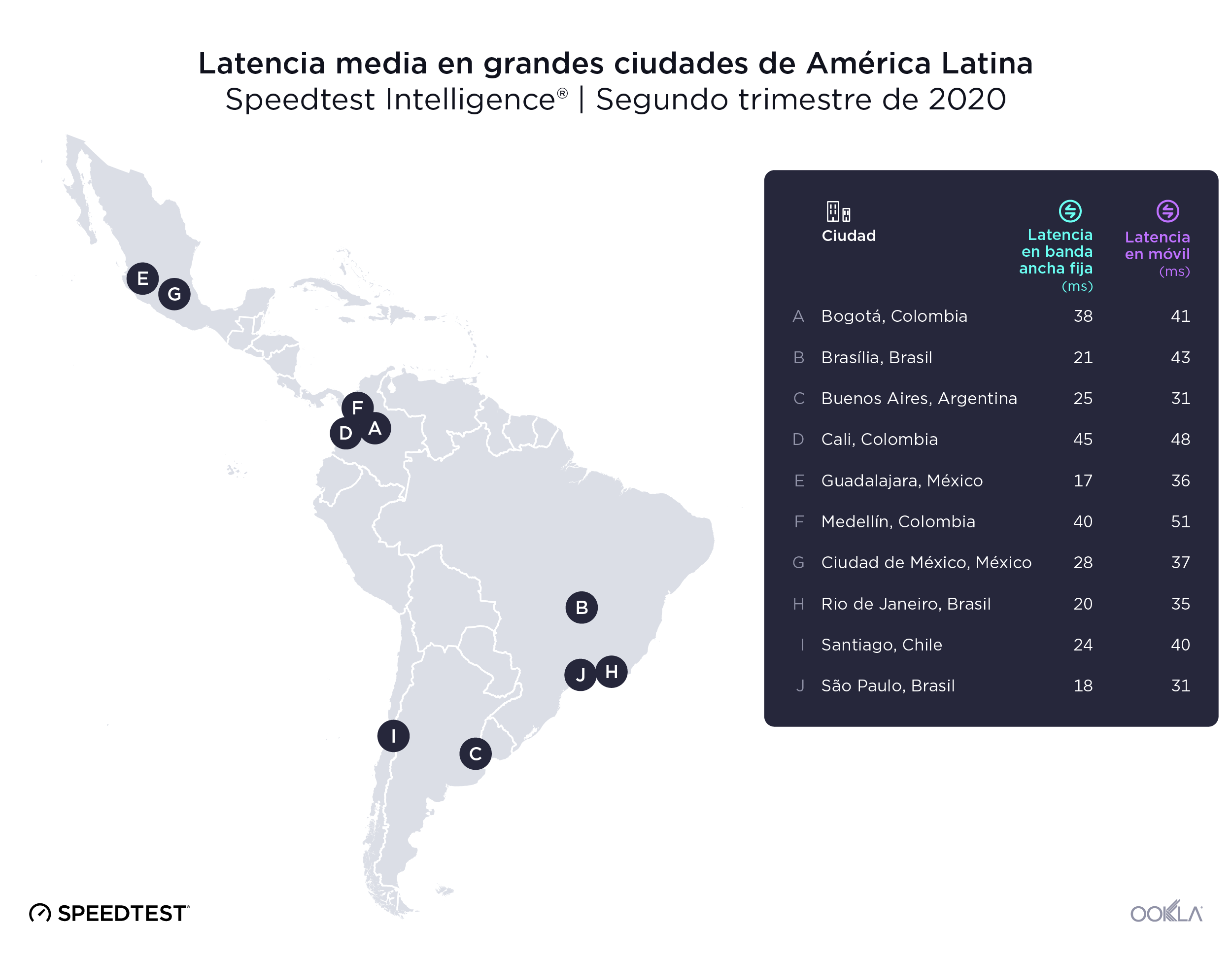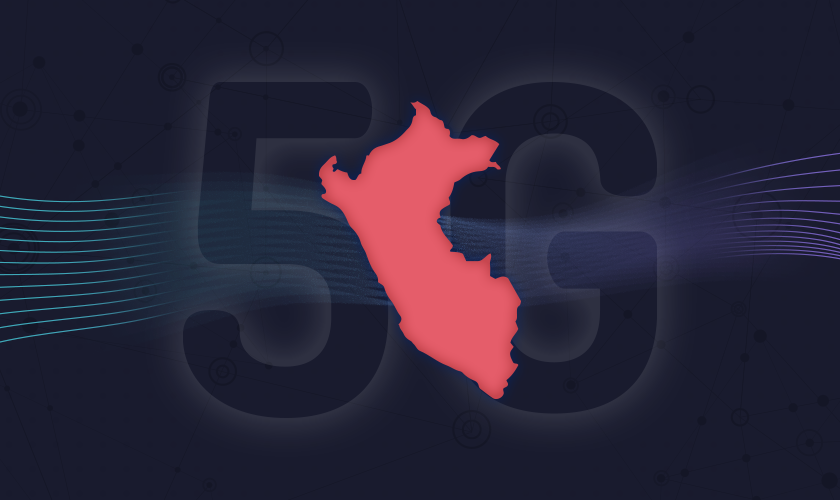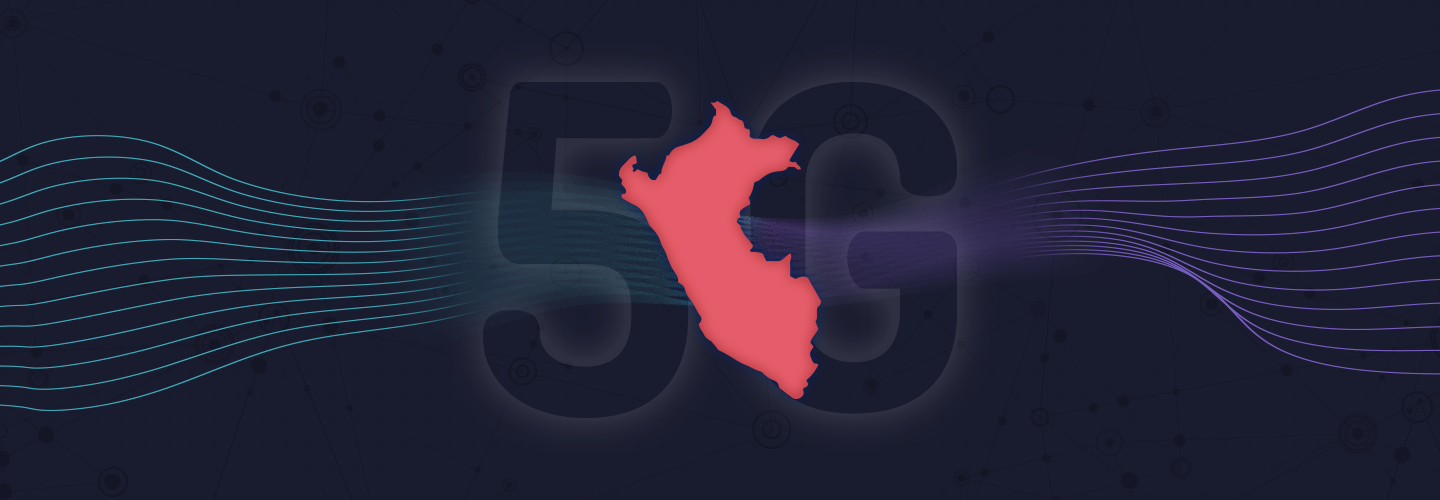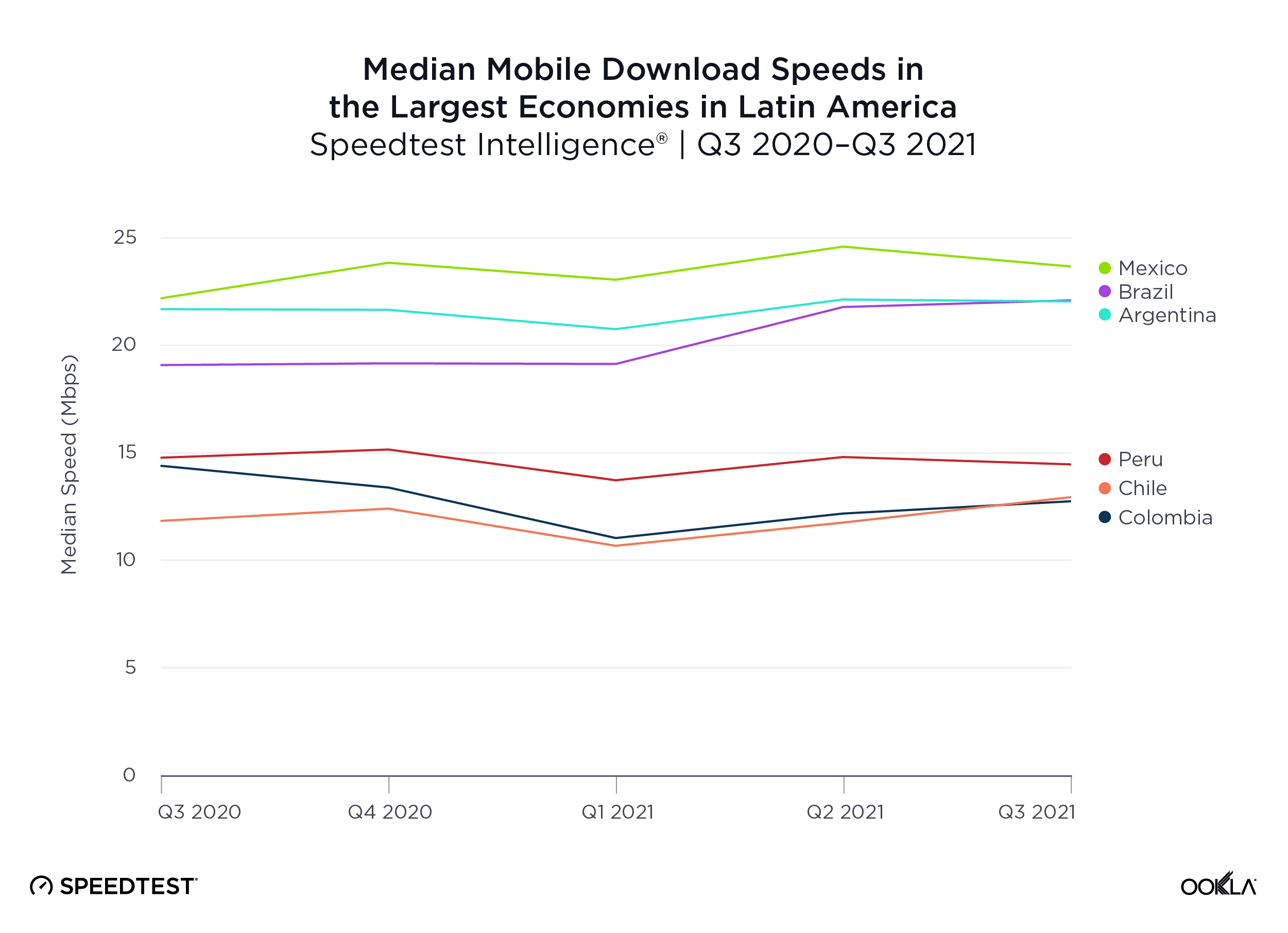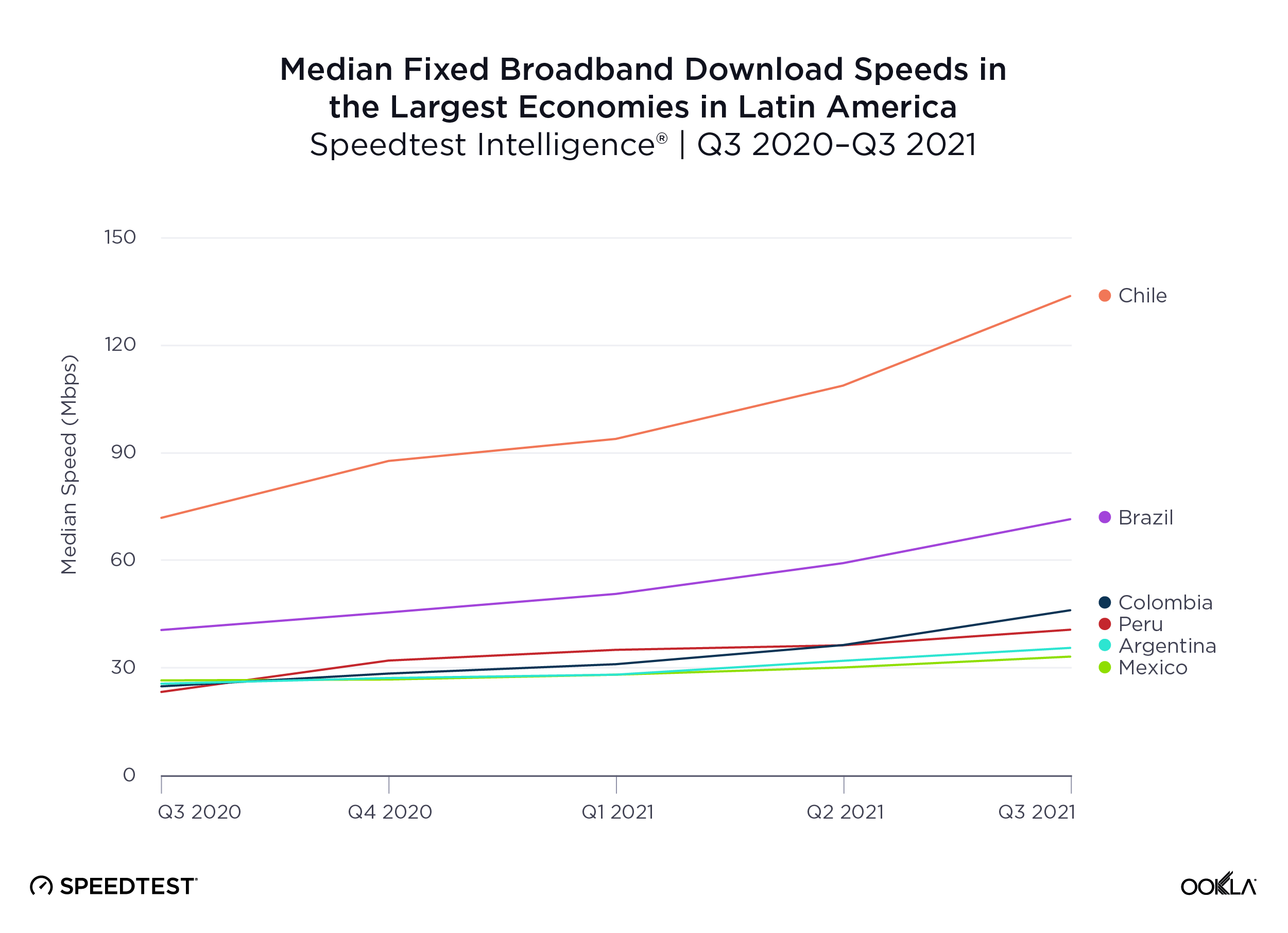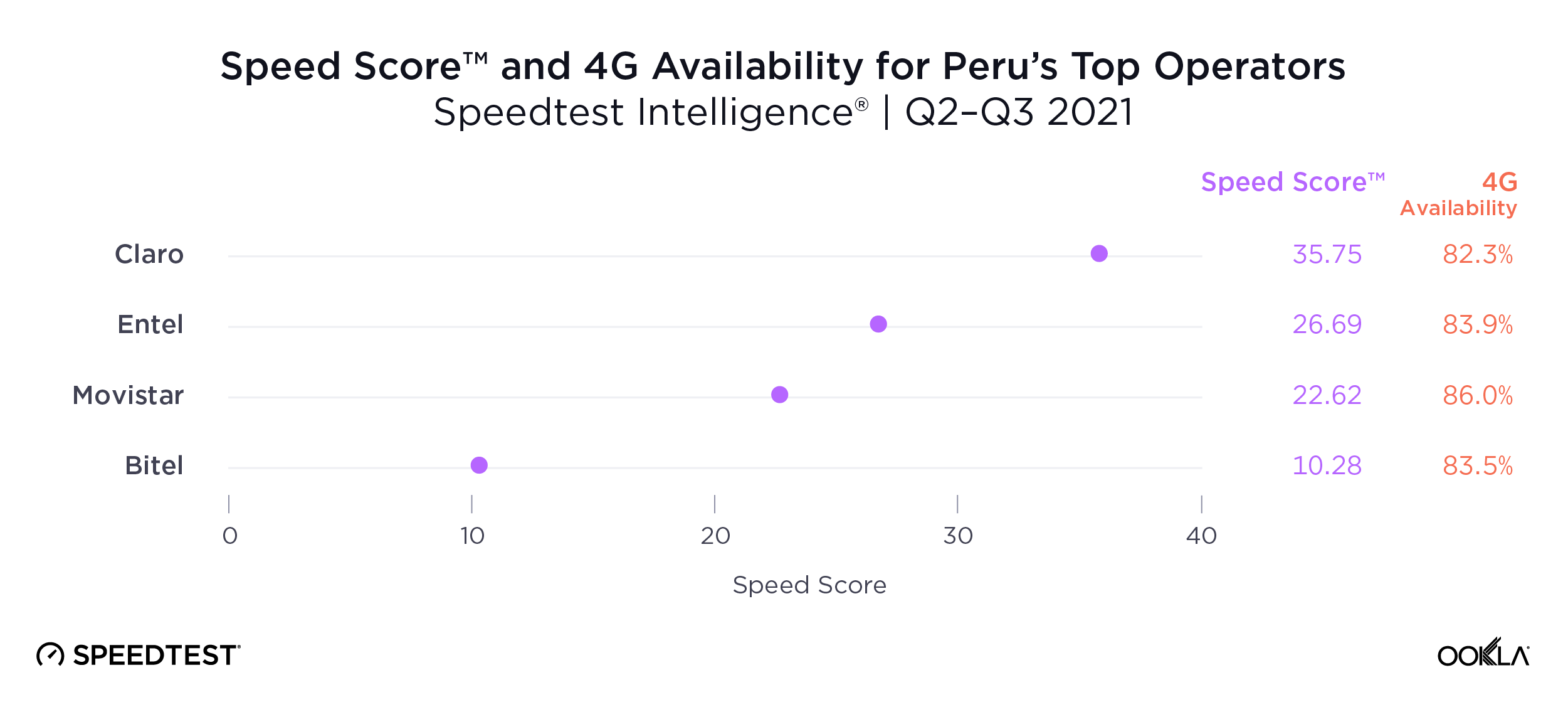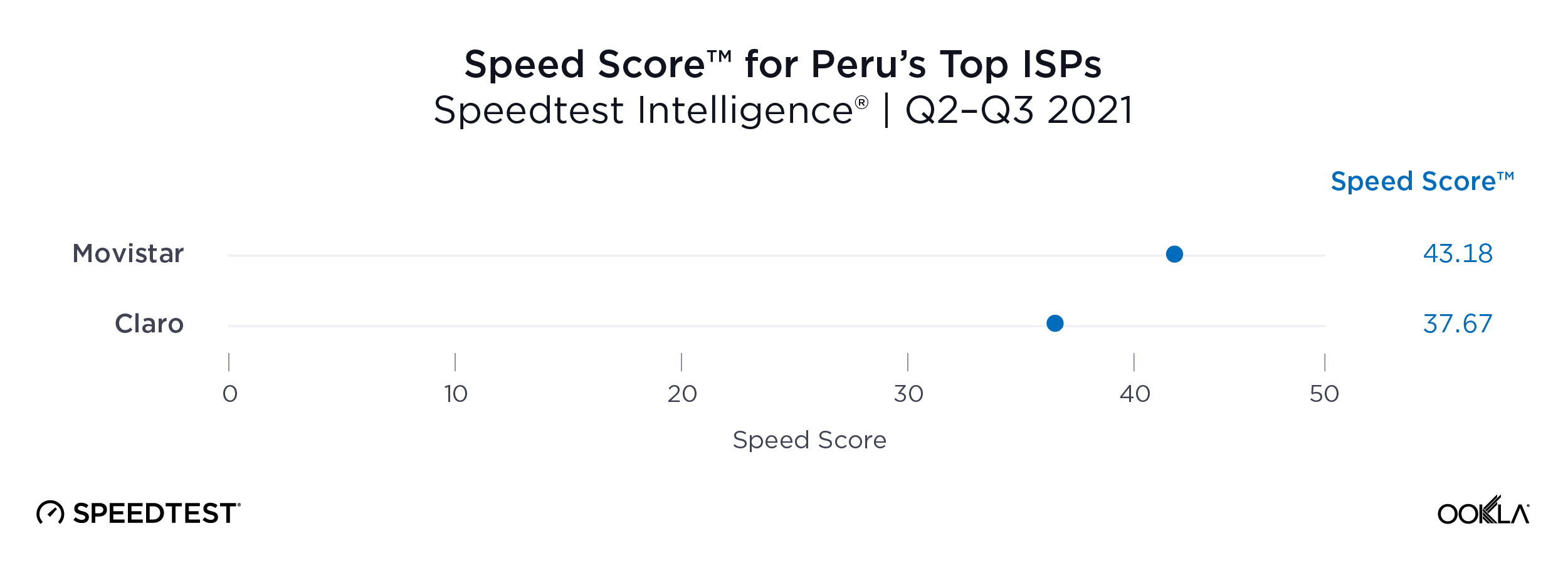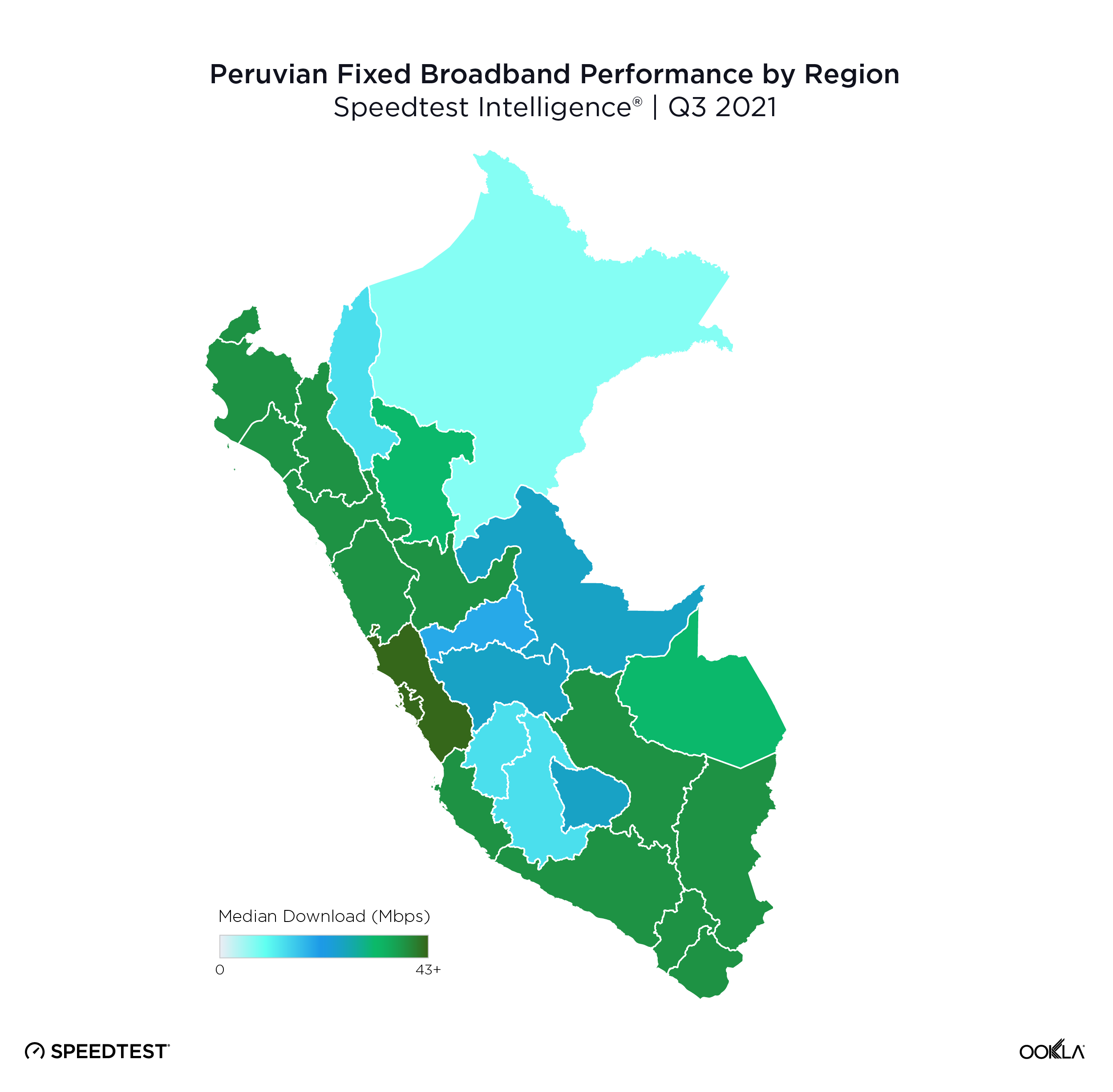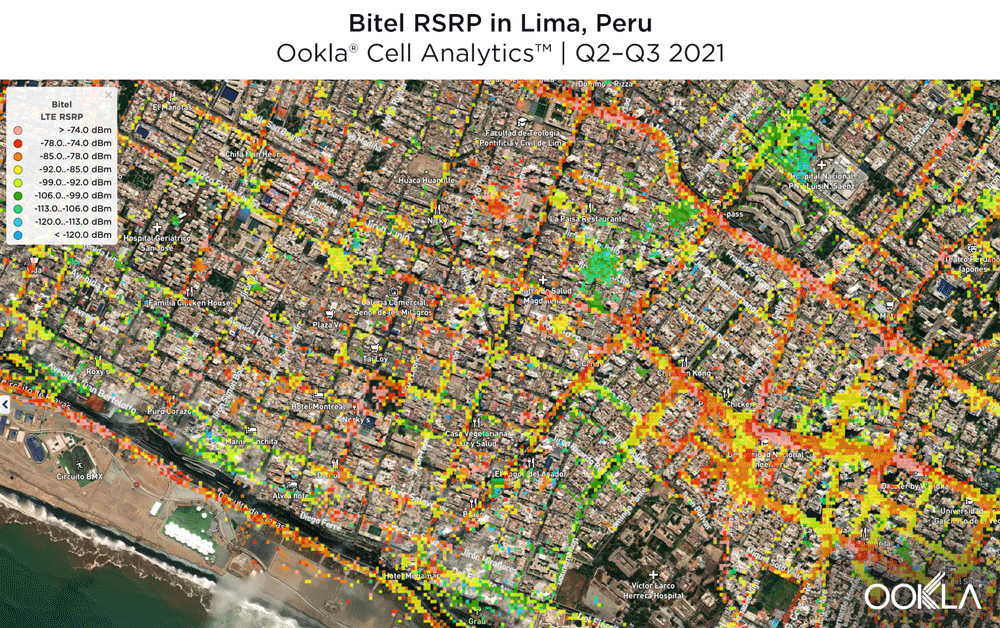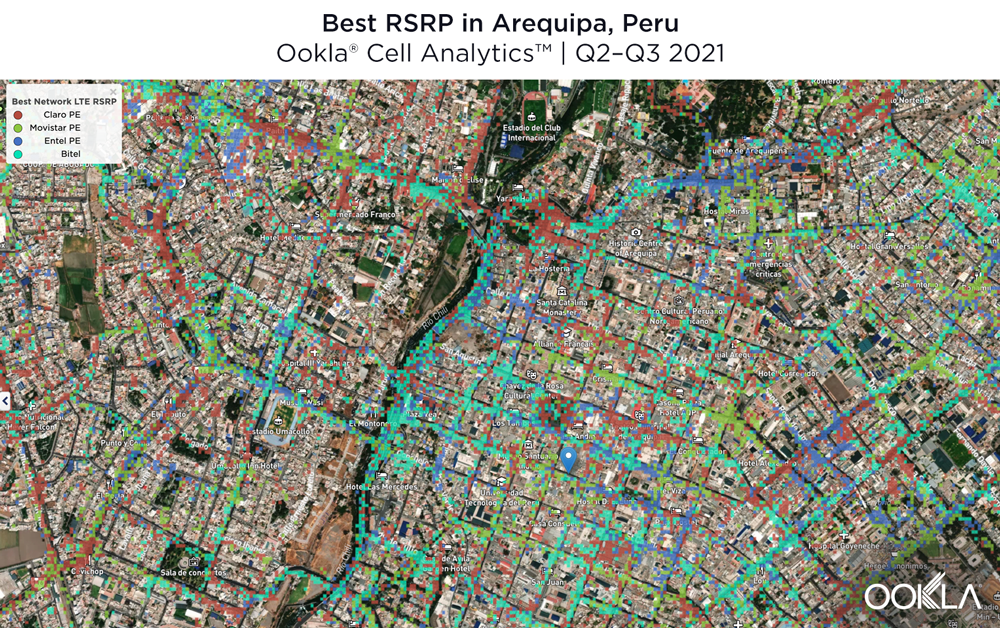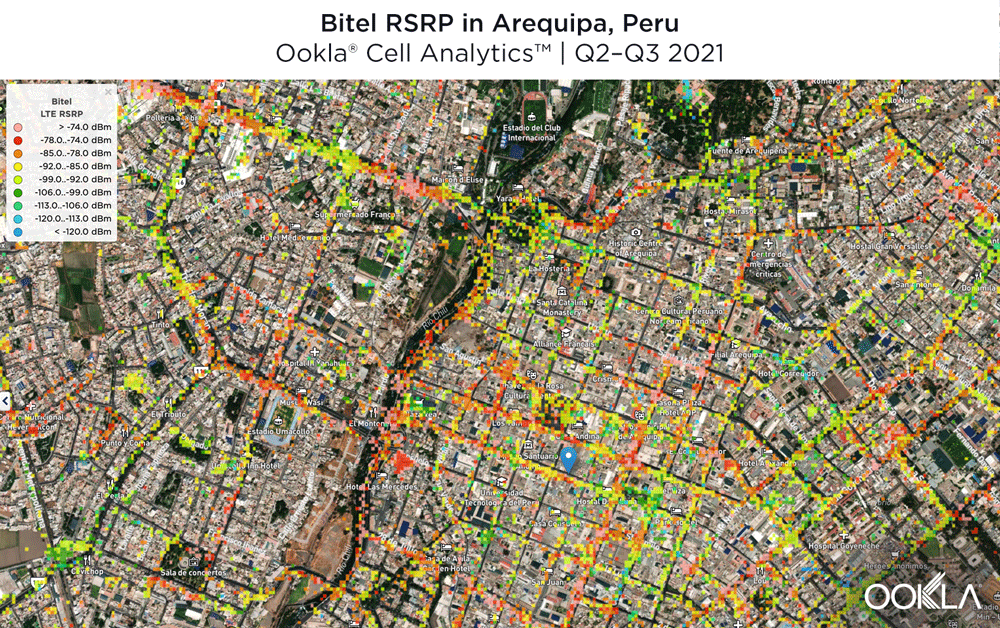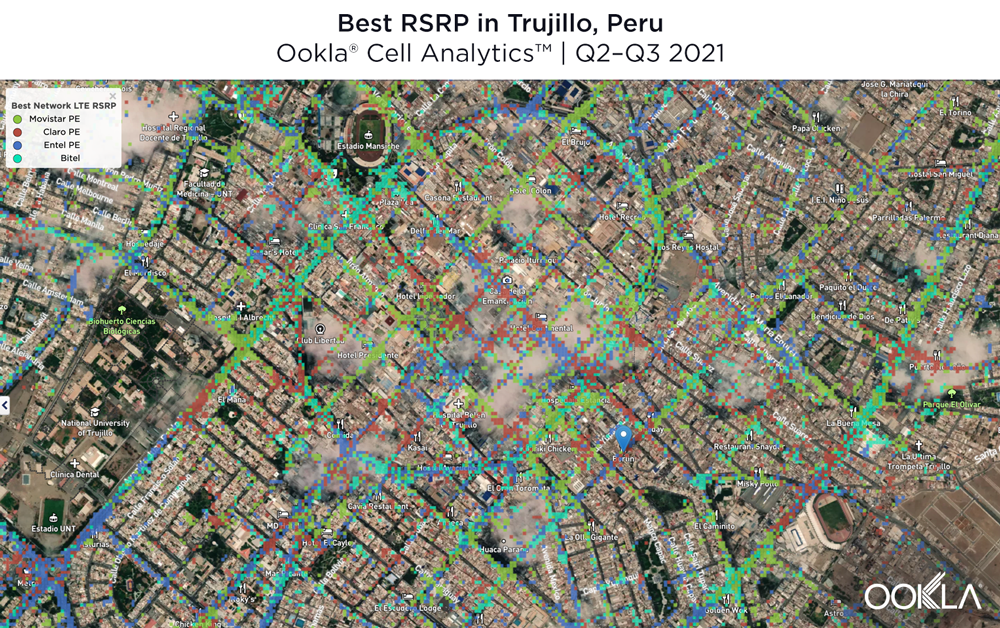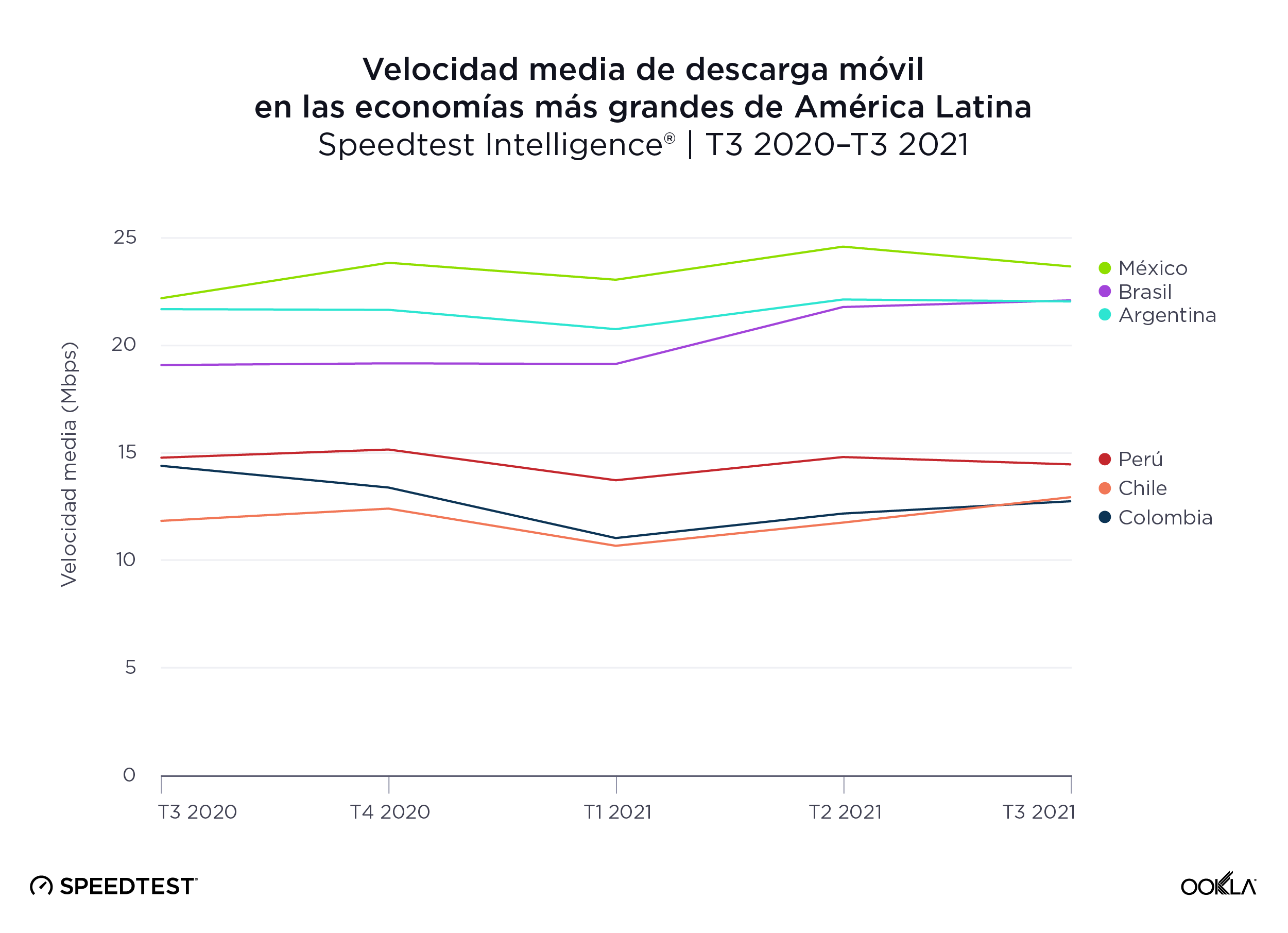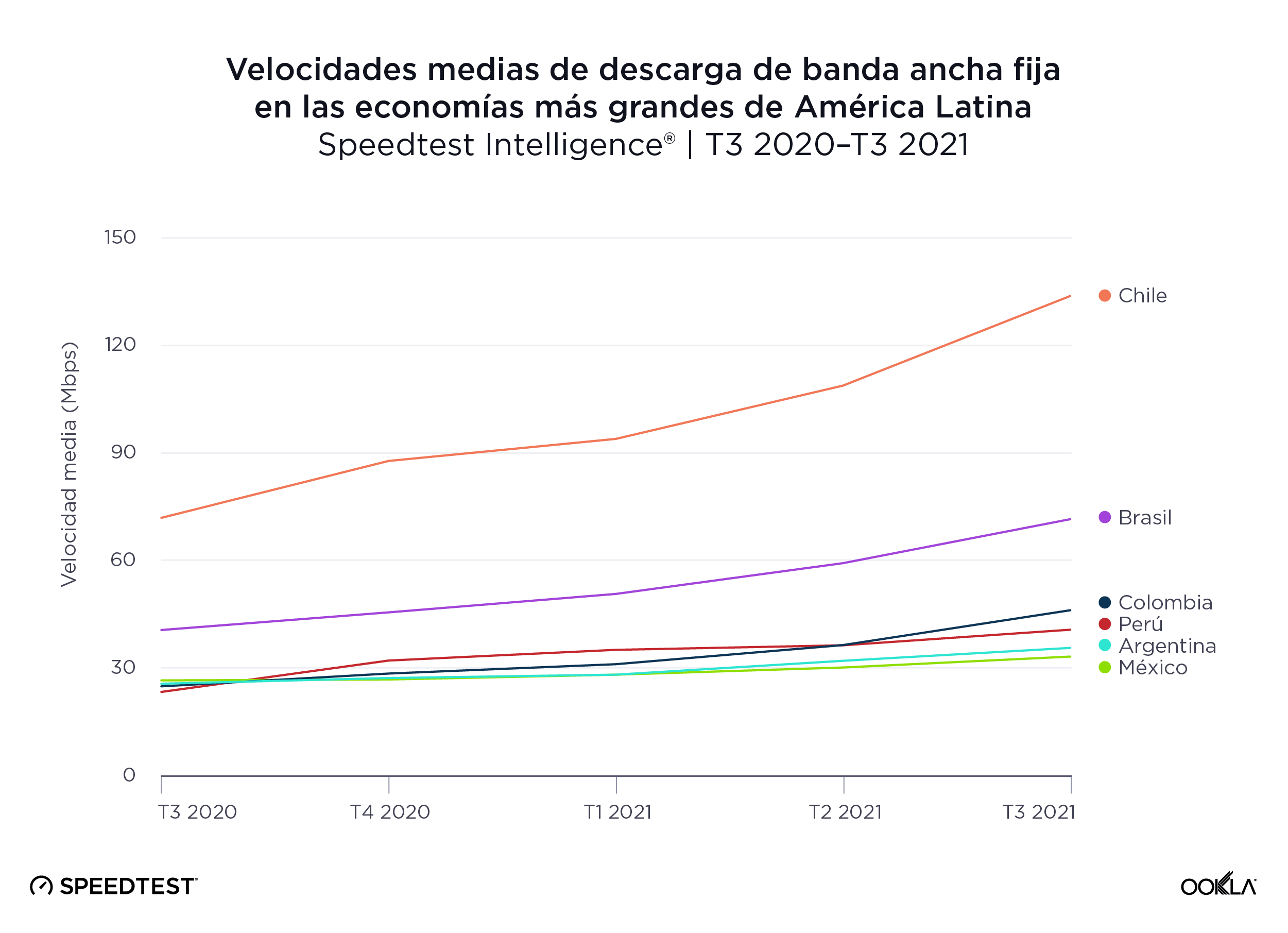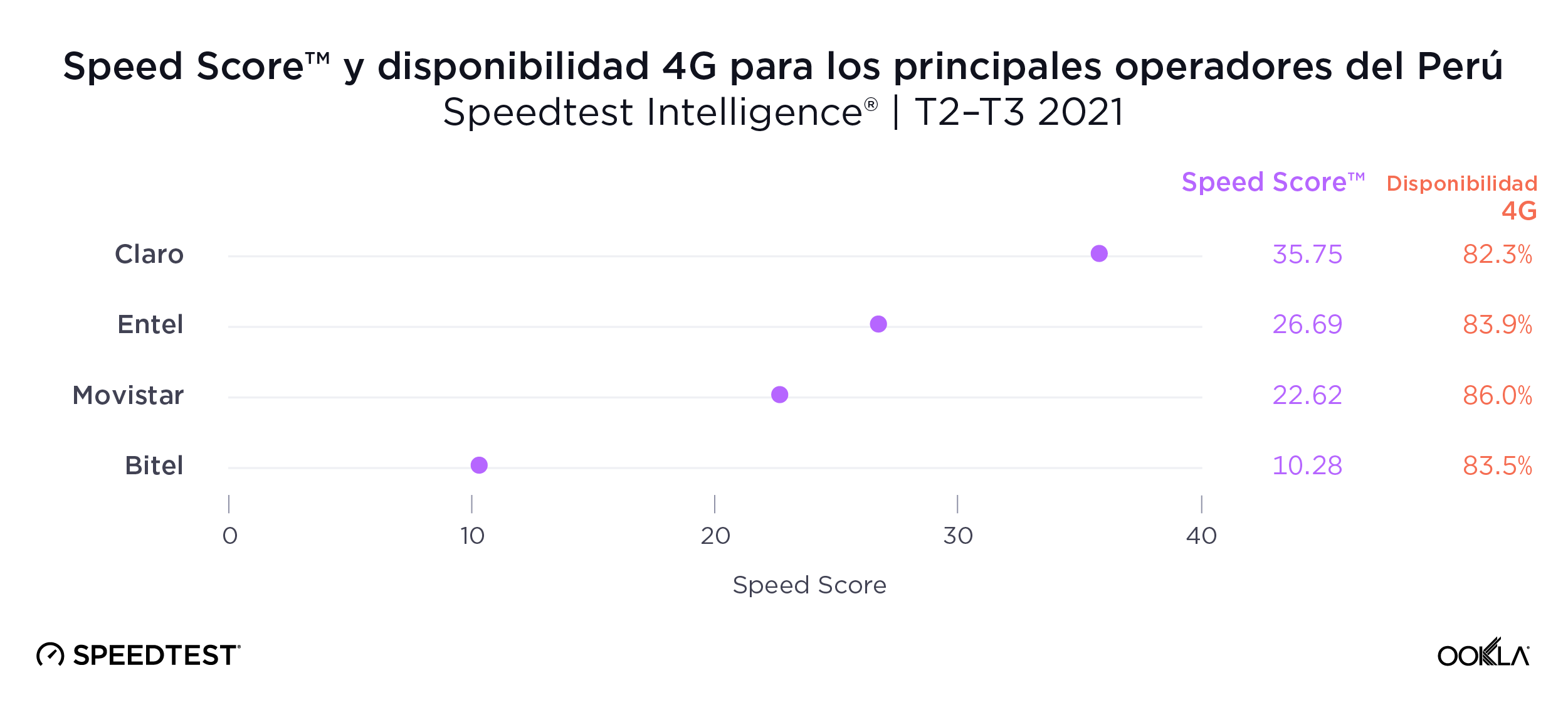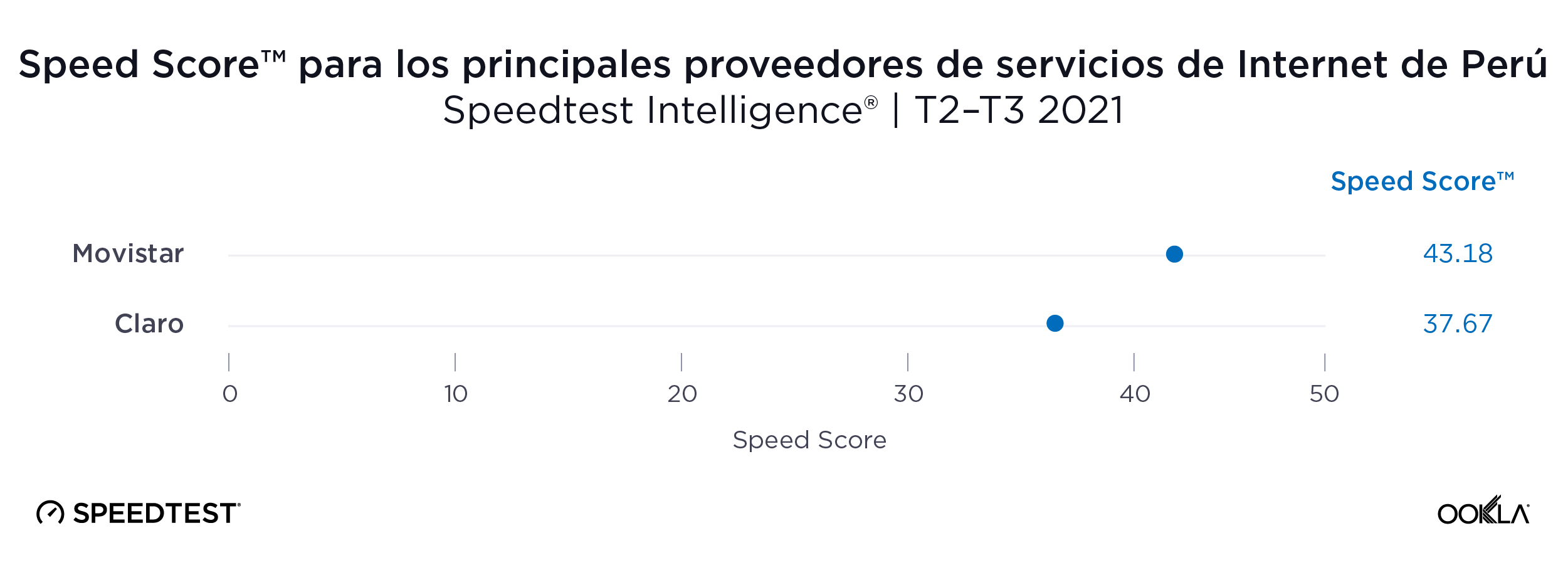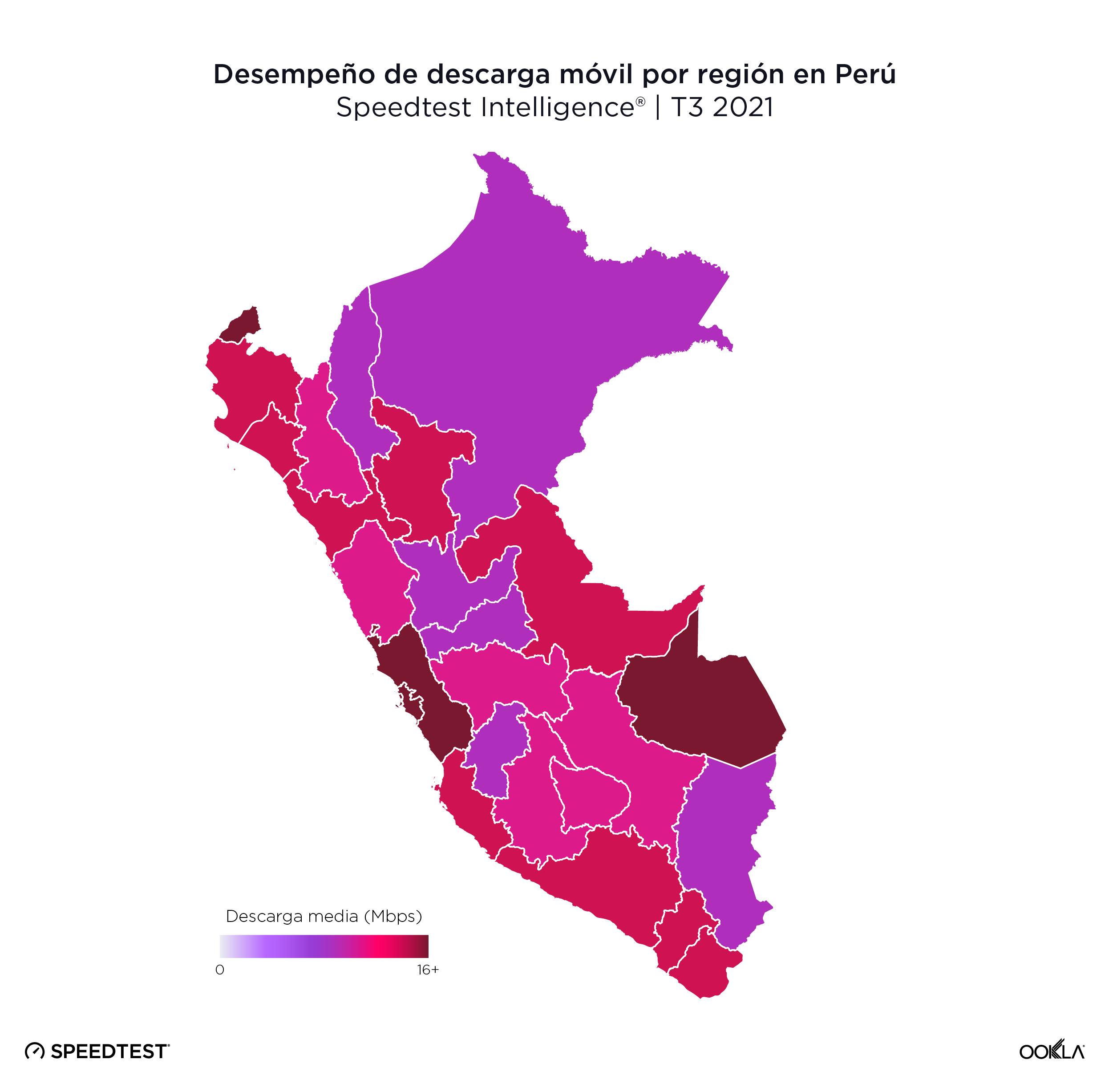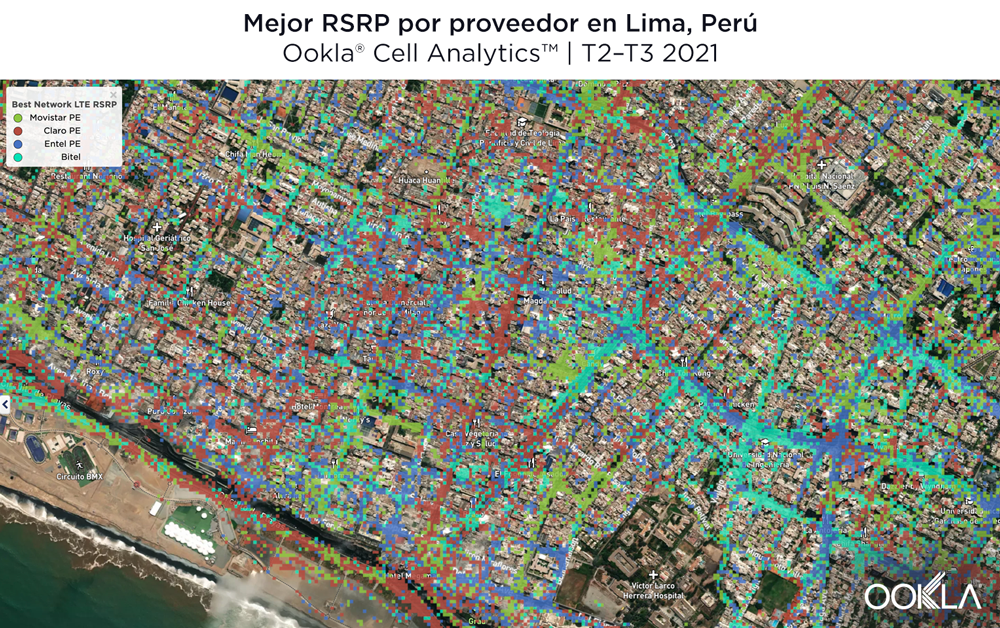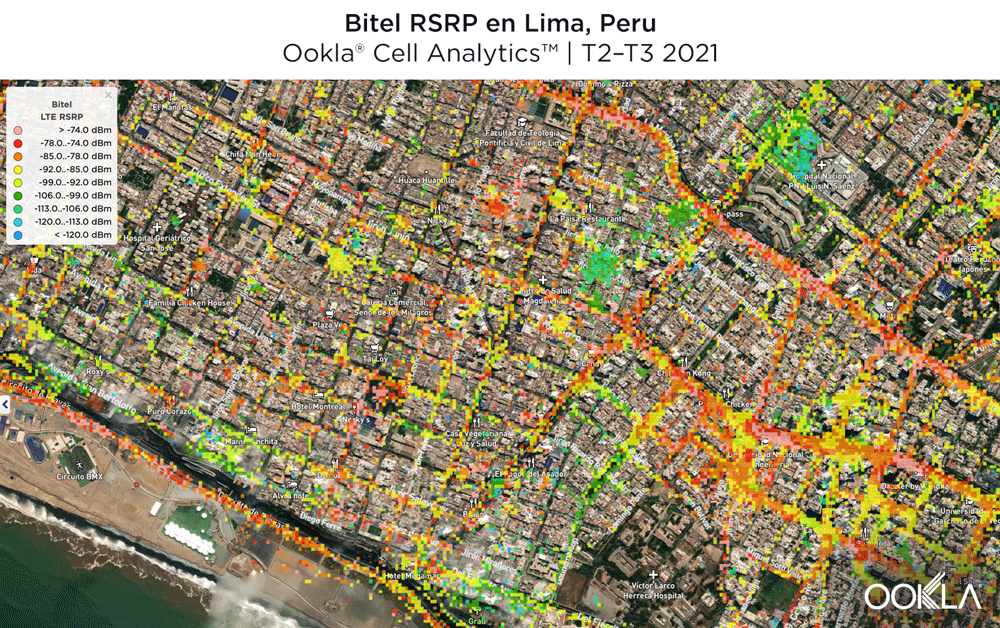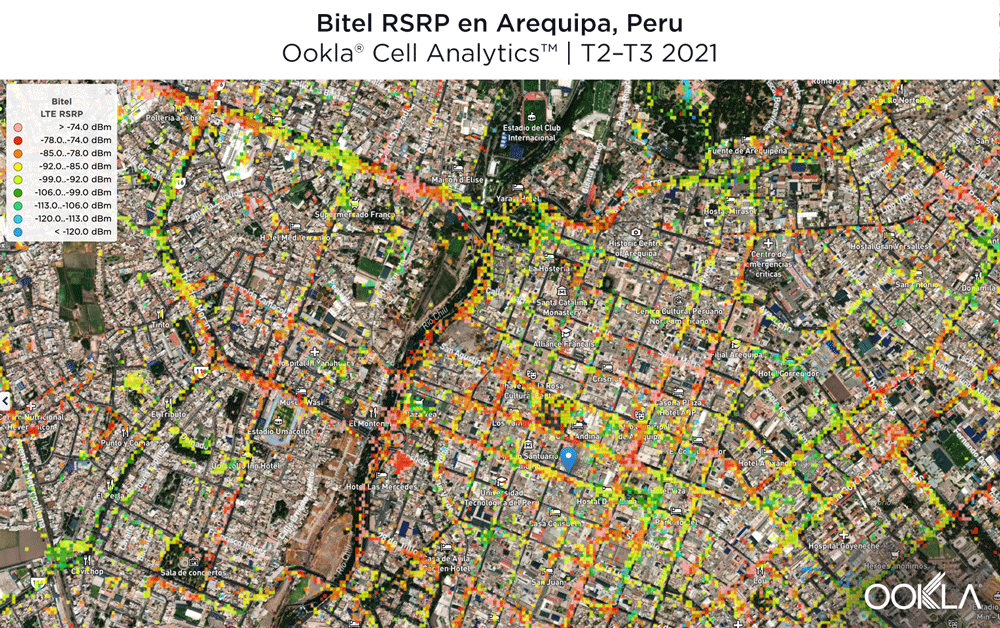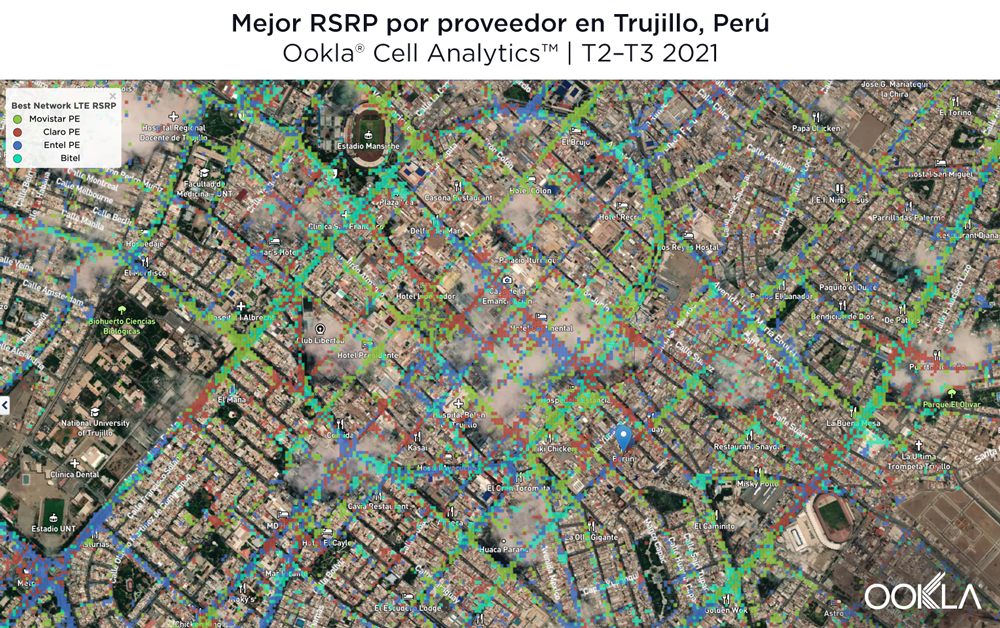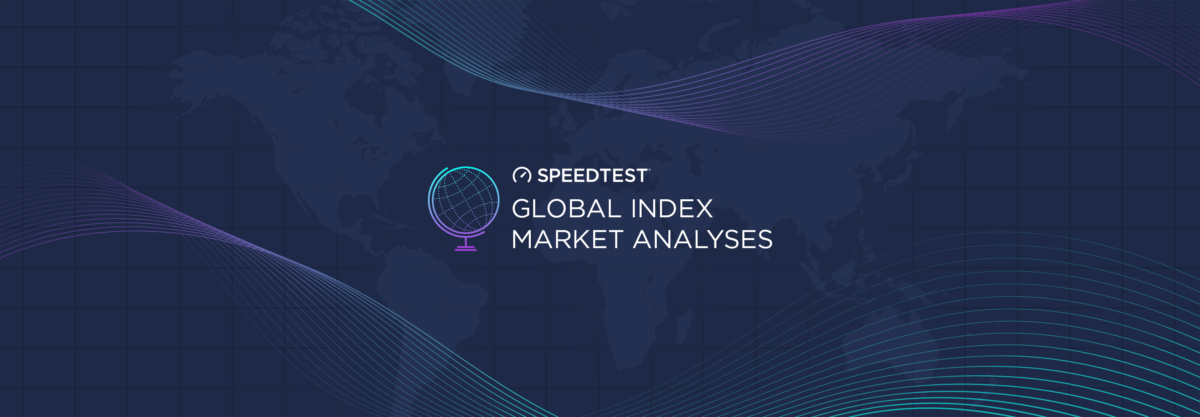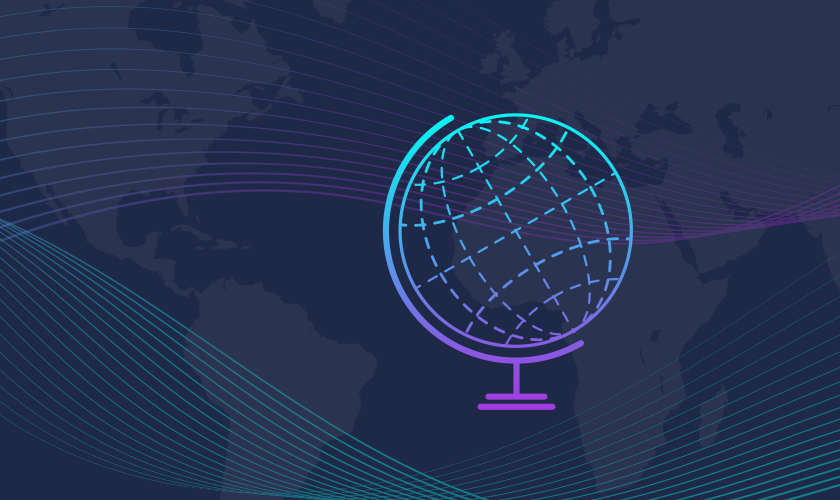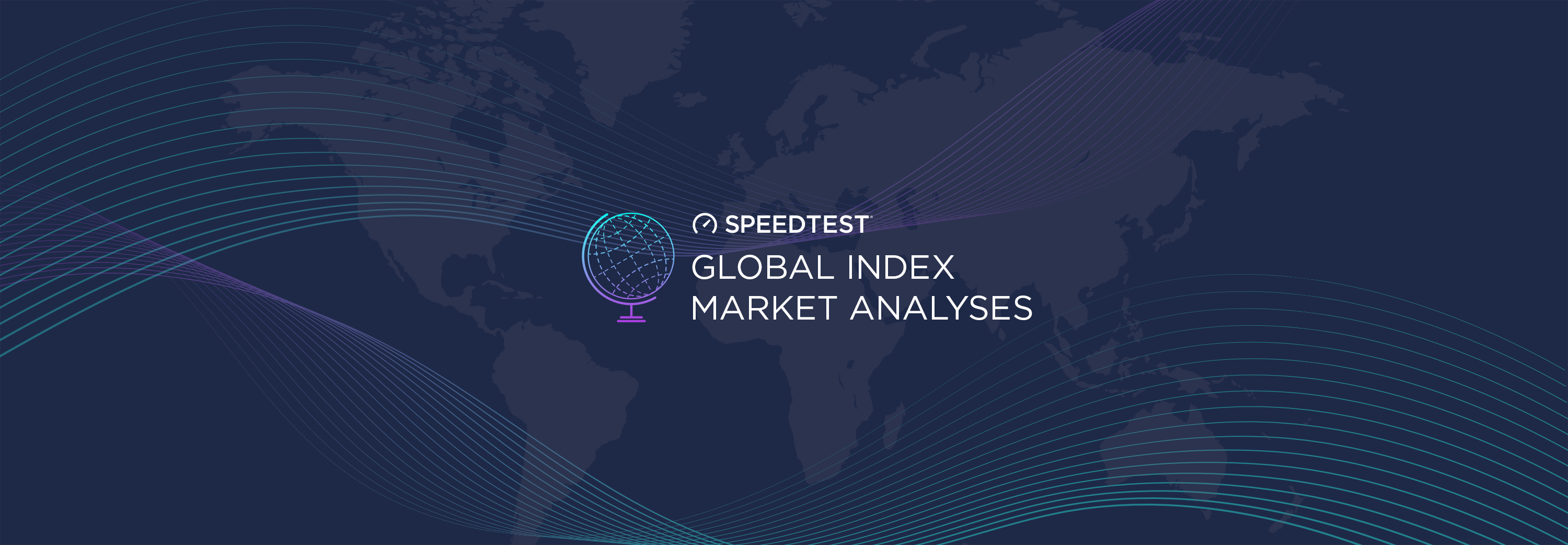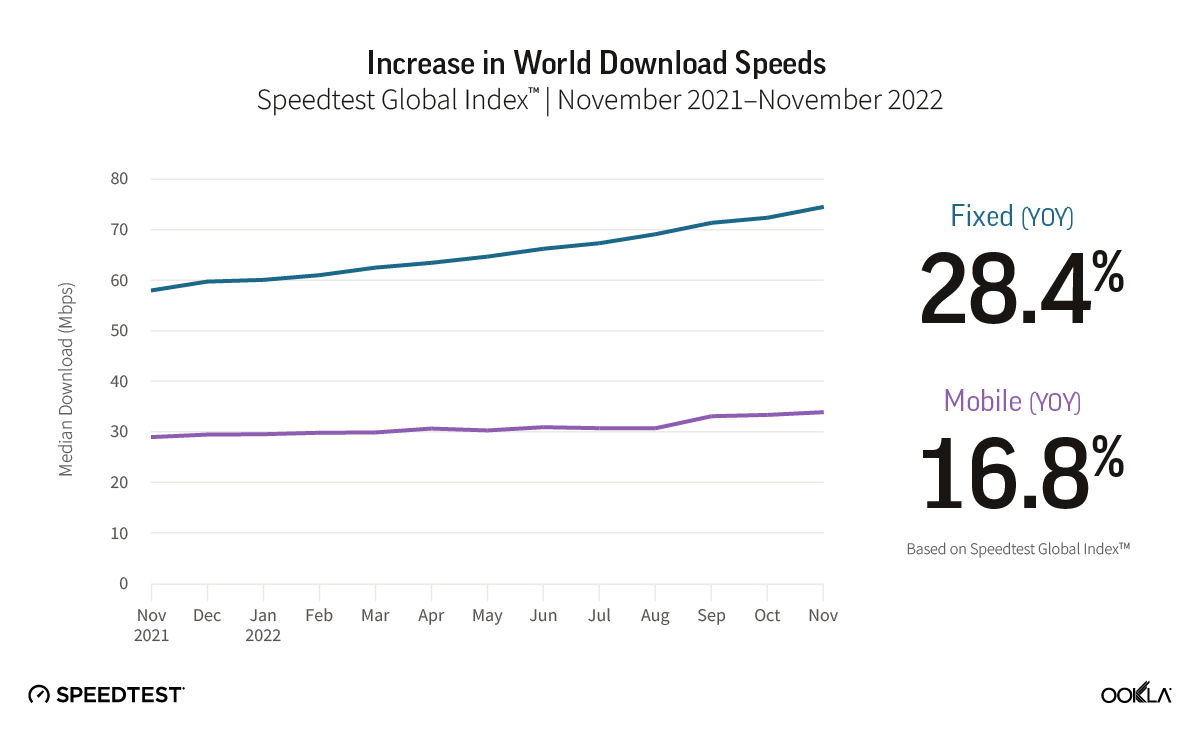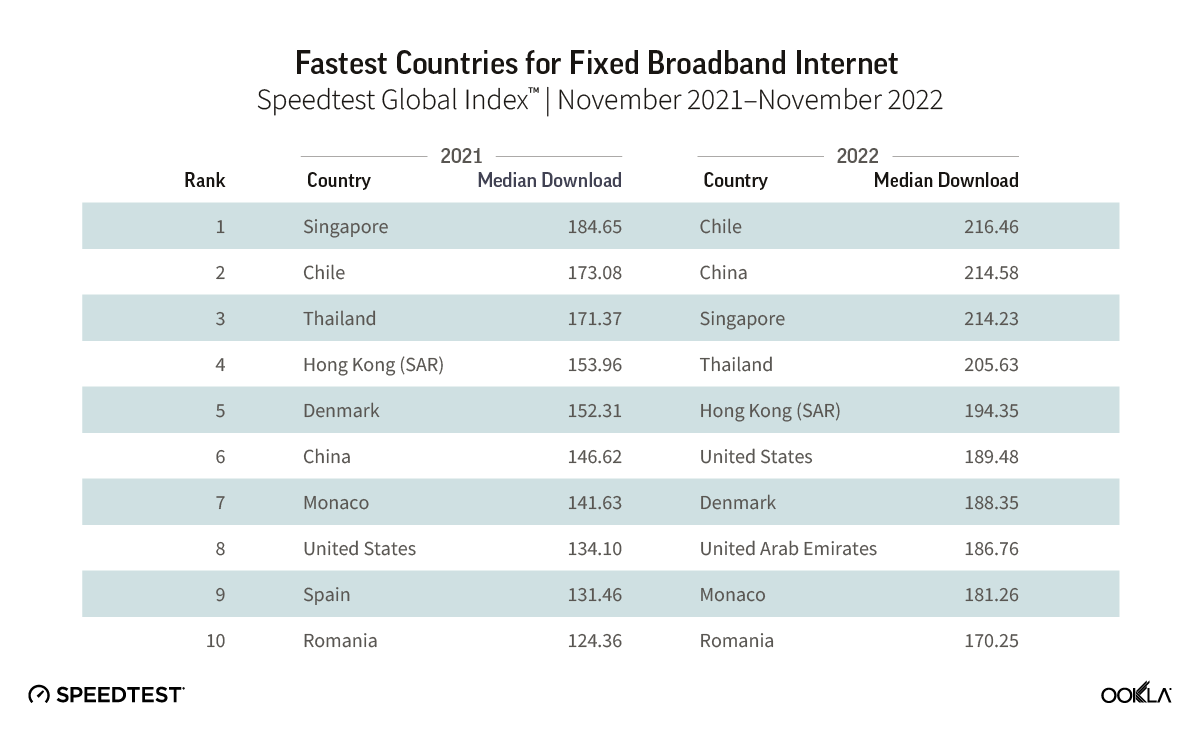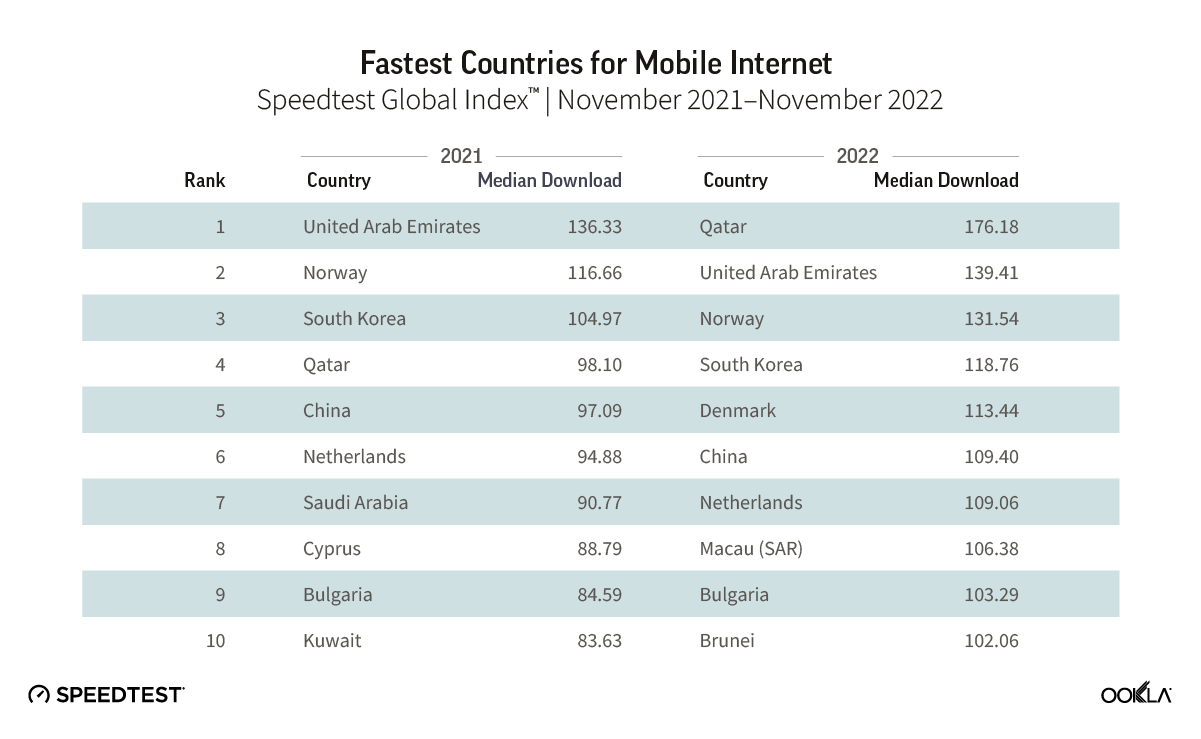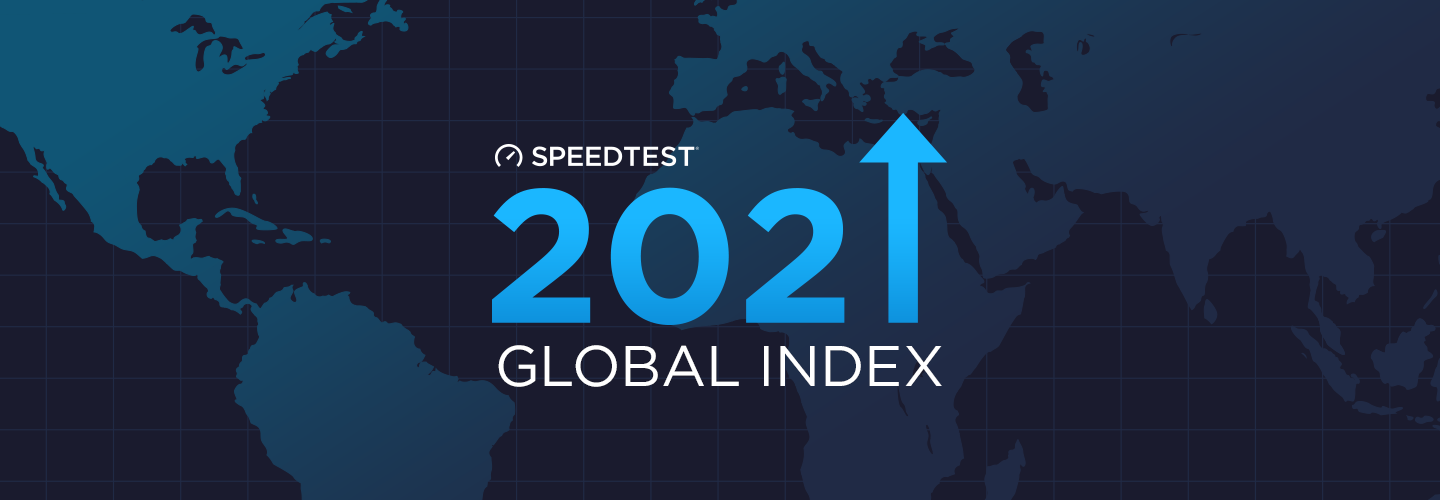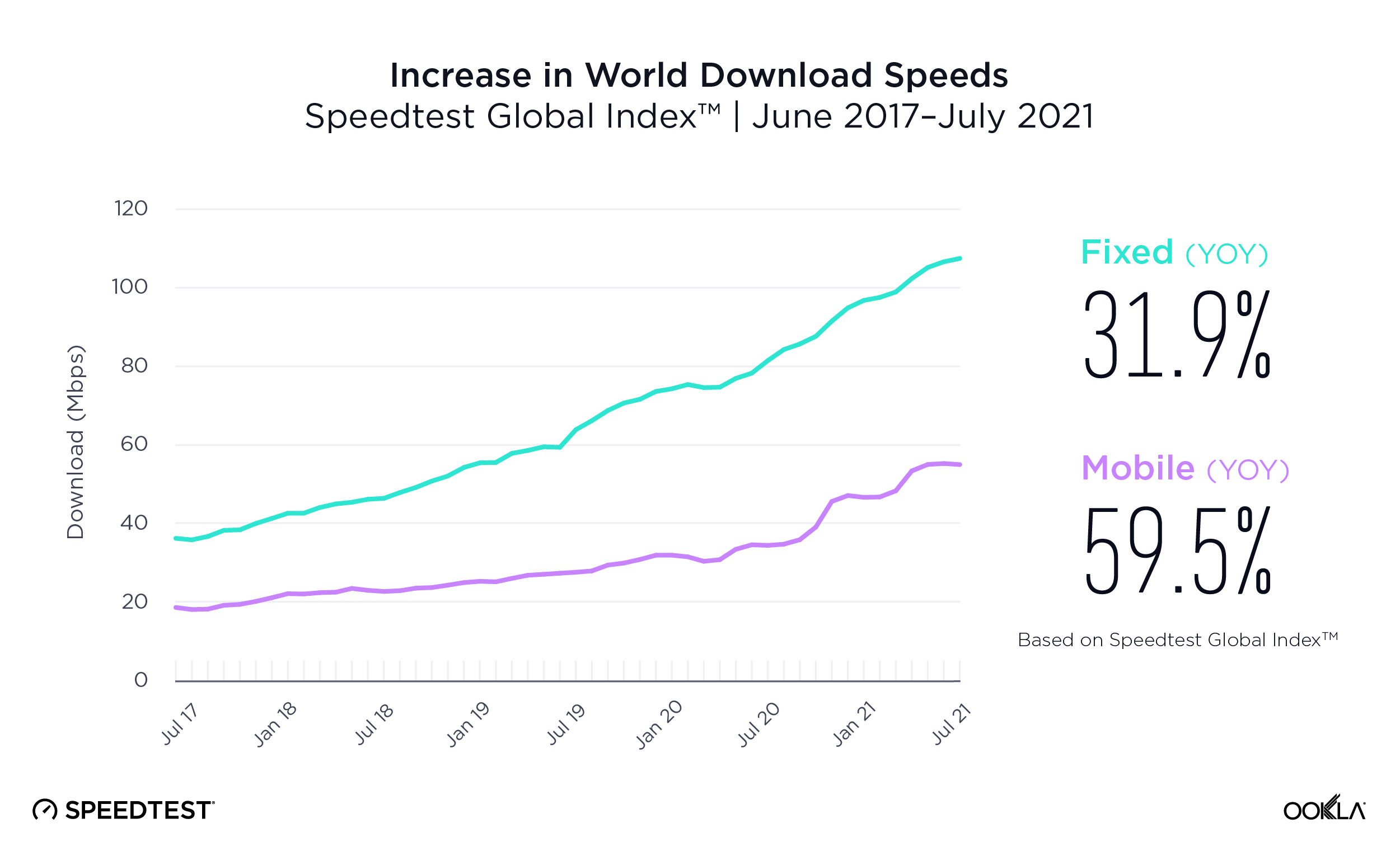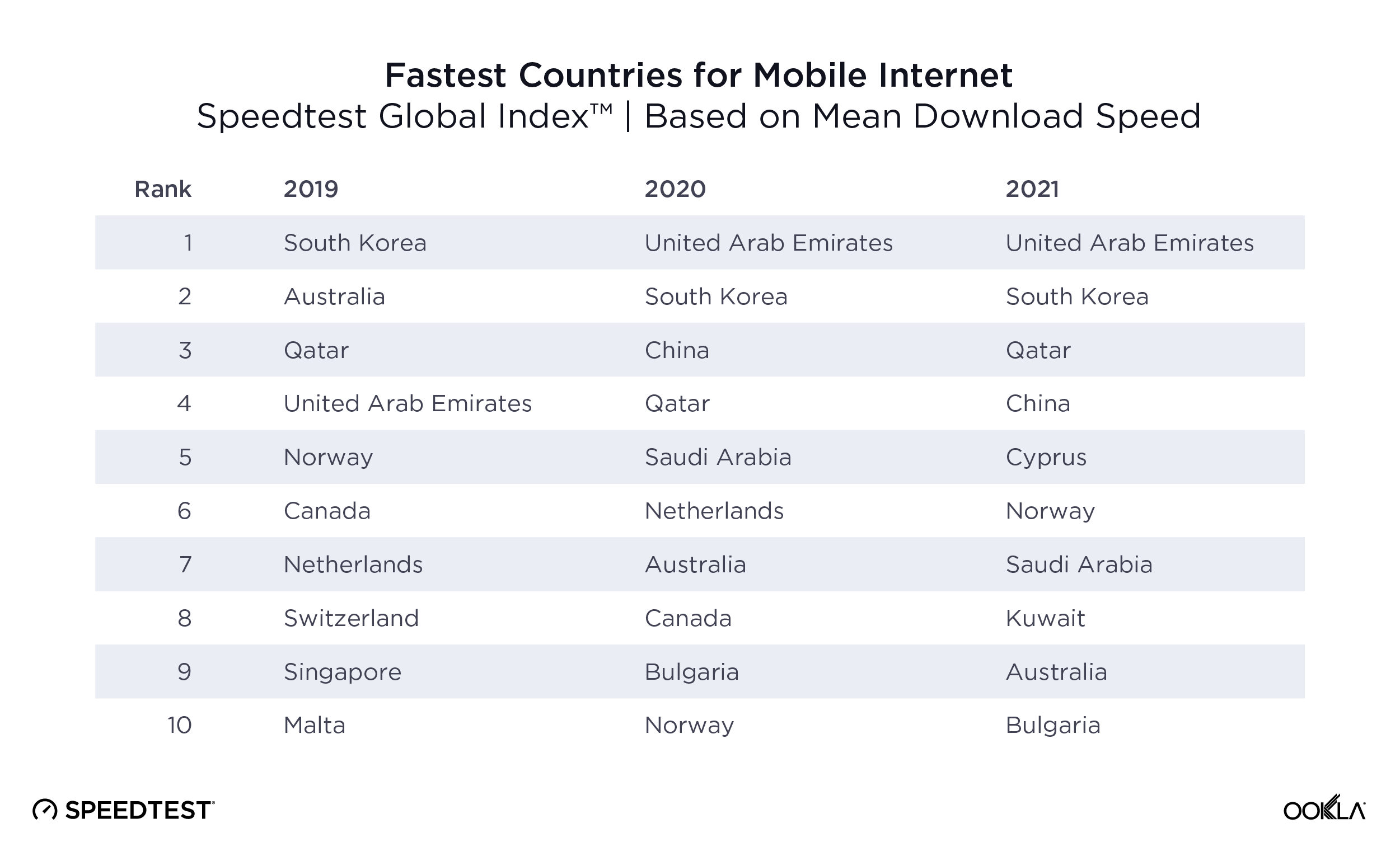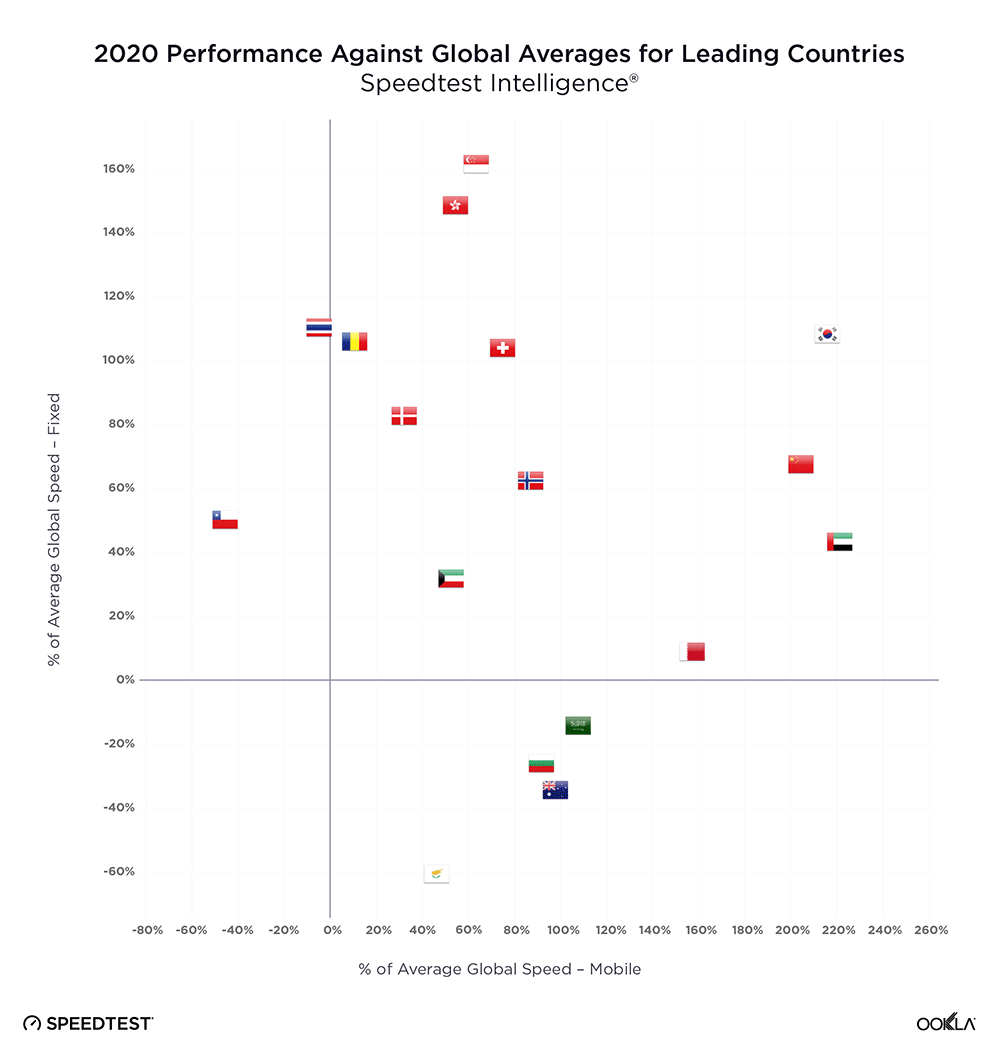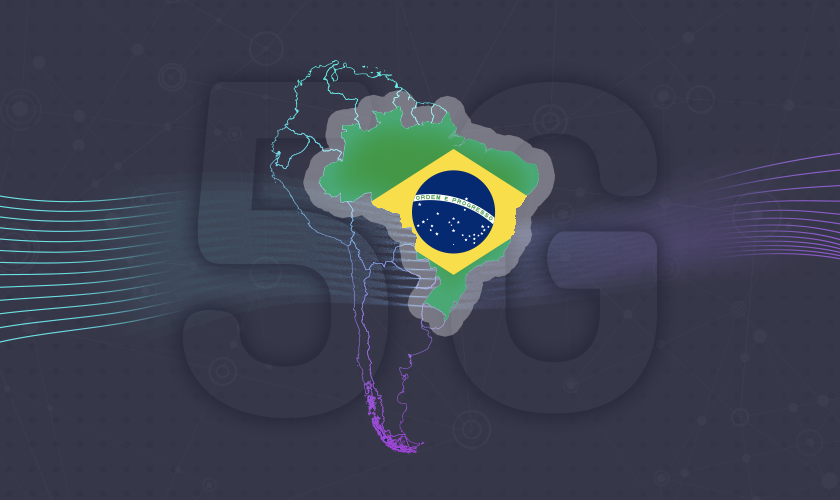
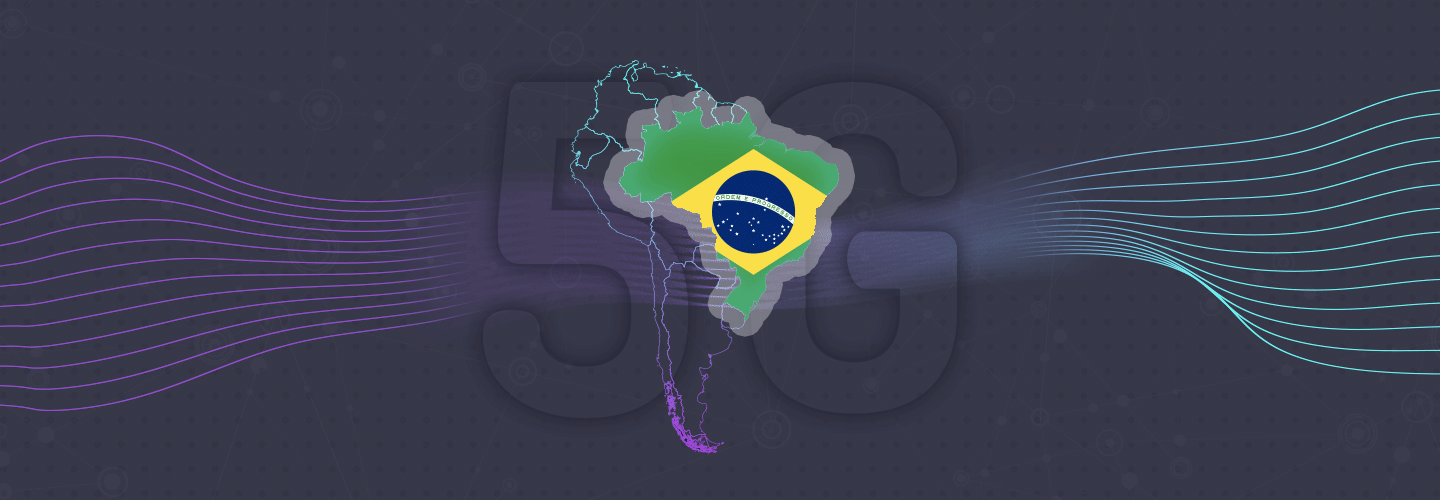
Brazil has become increasingly reliant on the internet for banking, business, telecommunication and leisure during the COVID-19 pandemic. However, the country ranked 49th in the world for fixed broadband speed and 74th for mobile speed according to April 2021 data from the Speedtest Global Index™. In fact, Brazil’s fixed broadband speed has improved 69.2% year-over-year thanks to FTTH investments, moving the country up seven places from 56th in April 2020 to 49th in the Speedtest Global Index in April 2021. Brazil is on the brink of an internet revolution, with an upcoming 5G spectrum auction and future broadband investments becoming a priority. In this article, we examine fixed and mobile internet performance speeds, state-level performance, provider ratings and fastest providers, as well as city-level data on Brazil’s most populous cities to see which parts of the country are already enjoying faster speeds.

Speedtest Intelligence® reveals Brazil ranked third for median mobile internet performance among major regional markets at 19.14 Mbps (download) and 7.17 Mbps (upload), Mexico was first on the list (23.08 Mbps download / 9.98 Mbps upload), Argentina second (20.76 Mbps download / 6.94 Mbps upload), Colombia fourth (11.04 Mbps download / 6.99 Mbps upload) and Chile fifth (10.60 Mbps download / 8.44 Mbps upload).
Brazil has the second fastest fixed broadband

Brazil was second only to Chile for median fixed broadband speeds among major Latin American markets during Q1 2021 according to Speedtest Intelligence. Chile showed speeds of 93.92 Mbps (download) and 30.72 Mbps (upload), and Brazil came in at 50.64 Mbps (download) and 26.37 Mbps (upload). Colombia was third (31.02 Mbps download / 6.67 Mbps upload), Mexico fourth (28.48 Mbps download / 7.57 Mbps upload) and Argentina fifth (28.10 Mbps download / 6.29 Mbps upload).
Brazil’s fastest mobile operator is far ahead of the competition
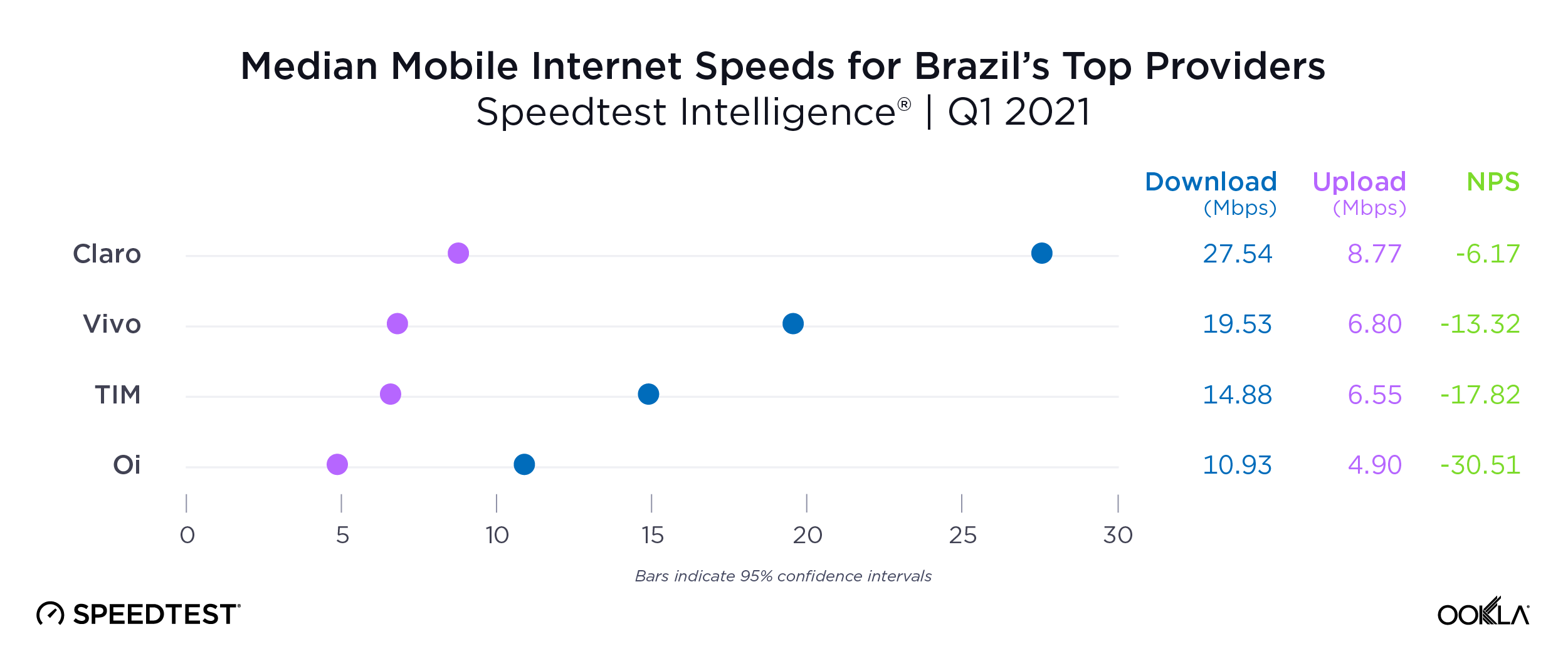
During Q1 2021, Claro had the fastest median mobile download and upload speeds in Brazil among top providers — an operator or ISP accounting for 3% or more of total test samples in the market for the entire period — at 27.54 Mbps (download) and 8.77 Mbps (upload). Vivo was second (19.53 Mbps download / 6.80 upload), TIM third (14.88 Mbps download / 6.55 Mbps upload) and Oi fourth (10.93 Mbps download / 4.90 Mbps upload).
We expect that Brazil’s mobile speeds will continue to accelerate as 5G technology becomes more accessible and network providers invest in more 5G deployments. An upcoming spectrum auction could improve 5G offerings for consumers and dramatically accelerate Brazilians’ mobile experience.
Network performance is often an important factor to a customer’s experience, but it’s not the only thing people take into consideration when evaluating their internet providers. We used Speedtest Consumer Sentiment™ data on five-star ratings and Net Promoter Score (NPS) to better understand how network performance impacts customer satisfaction in Brazil during Q1 2021.
According to Consumer Sentiment data, Brazil’s mobile network operators scored among consumers during Q1 2021: Claro had the best NPS score in Brazil at -6.17. Vivo was second (-13.32), TIM third (-17.82), and Oi fourth (-30.51). These scores happen to directly correspond to mobile performance among Brazil’s top providers, though there could be a host of other factors to account for in these scores.
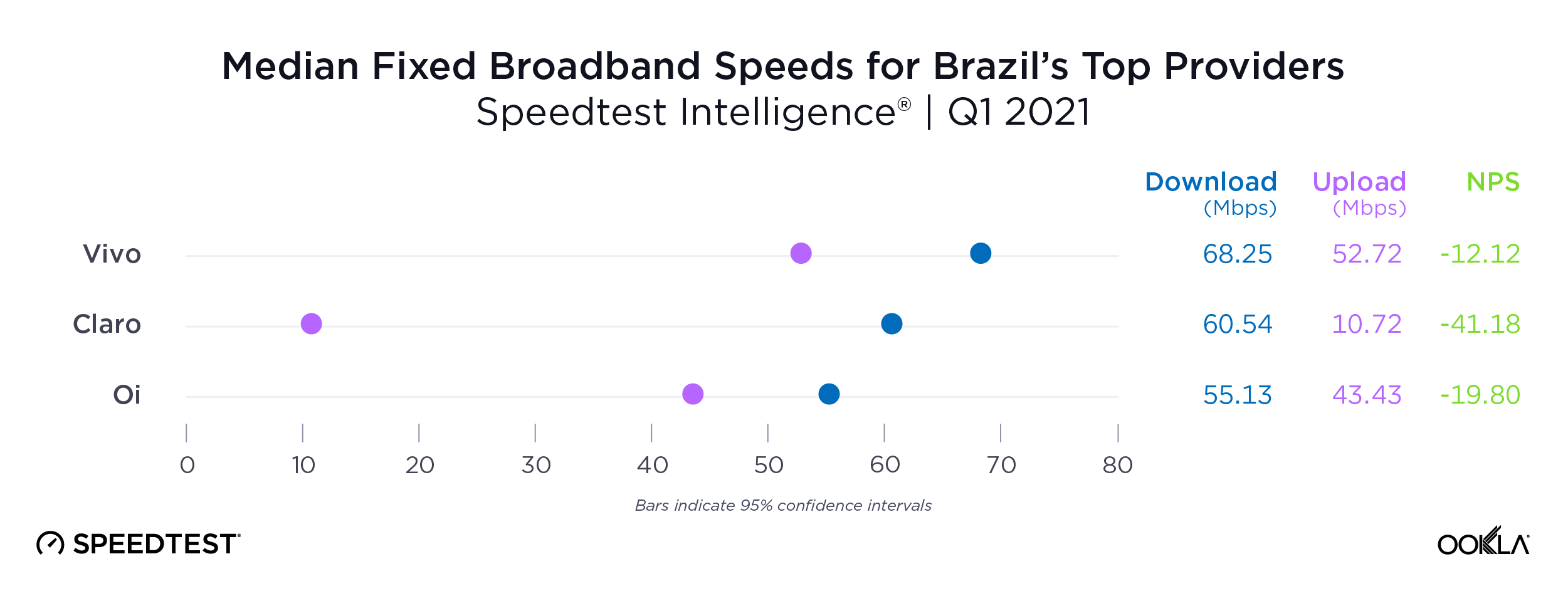
Brazil’s top fixed broadband providers had a competitive race for fastest provider in Brazil during Q1 2021. Vivo achieved the fastest median download and upload speeds in Brazil at 68.25 Mbps (download) and 52.72 Mbps (upload). Claro was second (60.54 Mbps download / 10.72 Mbps upload) and Oi was third (55.13 Mbps download / 43.43 Mbps upload).
Speedtest Consumer Sentiment data and NPS revealed that Vivo had the best score for fixed broadband among top providers during Q1 2021 at -12.12. Oi was second at -19.80 and Claro third (-41.18).
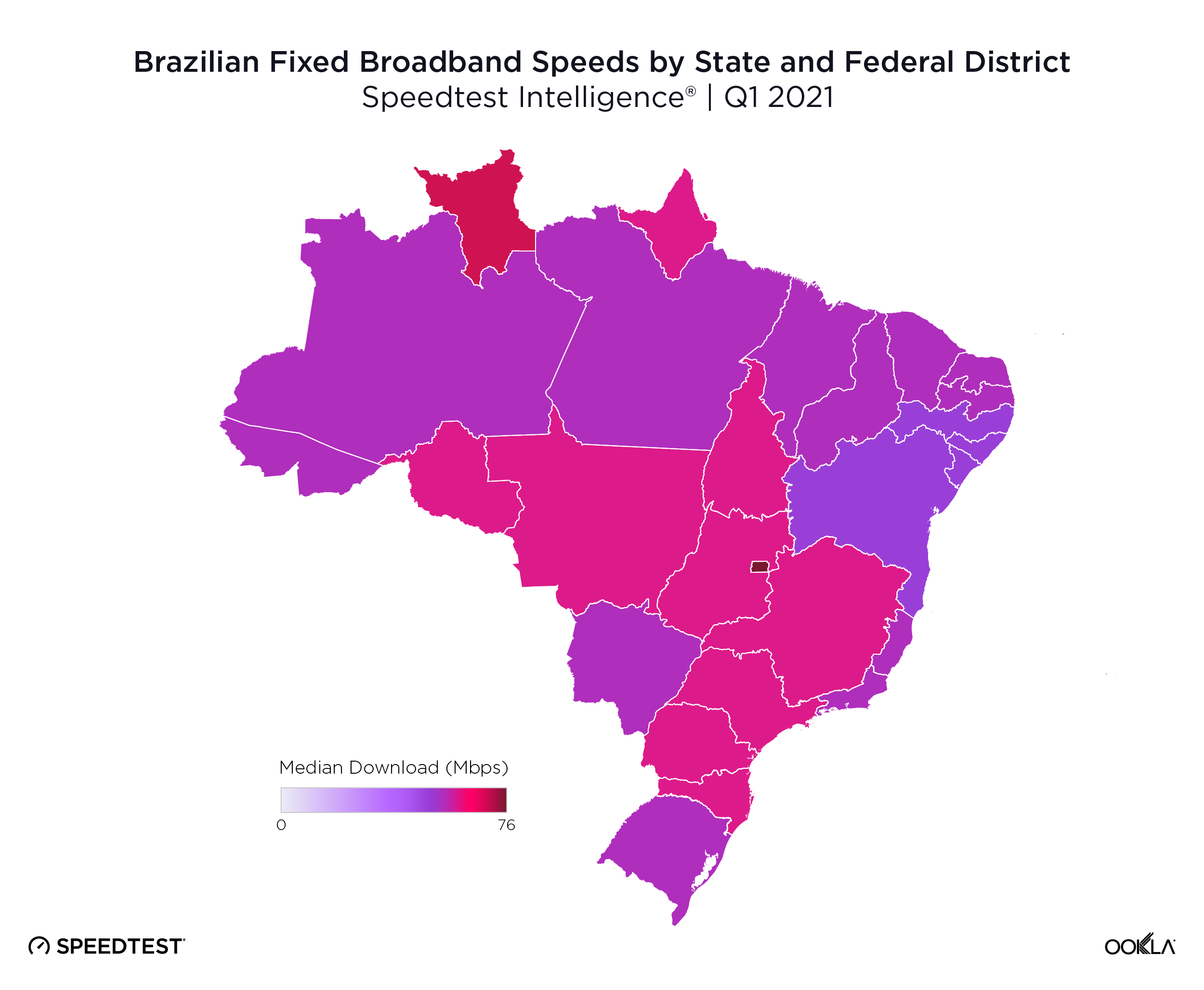
Brazil’s Federal District achieved the fastest median fixed broadband speed among Brazilian states at 75.71 Mbps during Q1 2021. Roraima was second (60.72 Mbps) and São Paulo third (57.48 Mbps). While there was no statistically slowest state in Brazil, Sergipe and Bahia recorded the slowest median speeds at 30.44 Mbps and 30.92 Mbps, respectively. Alagoas and Pernambuco ranked slightly faster at 32.90 Mbps and 36.50 Mbps, respectively.
During the same period, there was no clear statistical winner for fastest median upload speed over fixed broadband but Roraima achieved 43.43 Mbps, Amapá 42.34 Mbps, and Piauí 39.24 Mbps. The slowest median upload speeds among Brazilian states were in Sergipe (15.92 Mbps), Alagoas (19.87 Mbps) and Amazonas (20.26 Mbps).
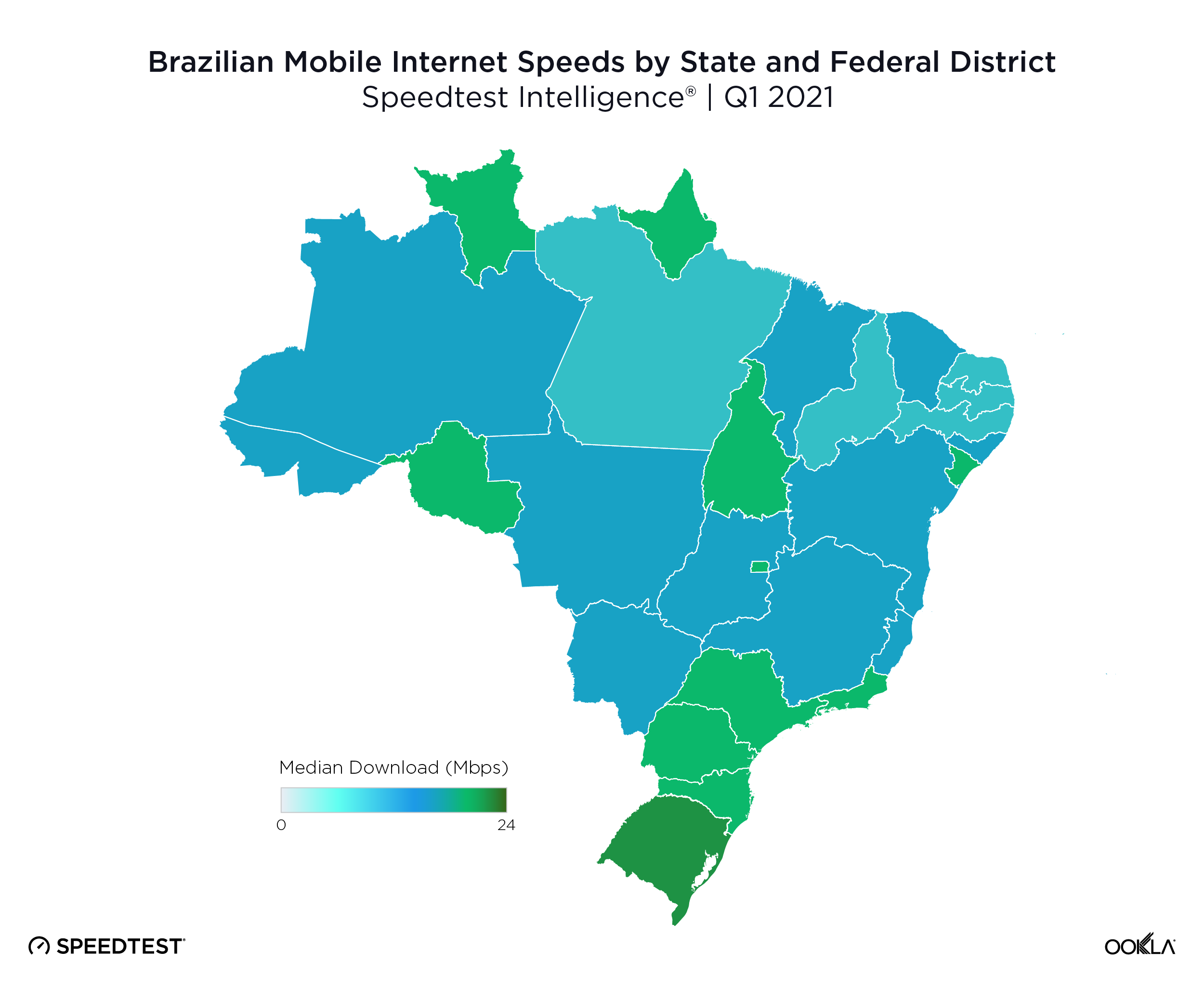
Rio Grande do Sul had the fastest median mobile download speed among Brazilian states during Q1 2021 at 23.31 Mbps. While there was no statistical runner-up, Rio de Janeiro recorded 21.10 Mbps, followed by Federal District (21.08 Mbps), São Paulo (21.00 Mbps), Paraná (20.64 Mbps), Roraima (20.51 Mbps) and Santa Catarina (20.42 Mbps). The state with the slowest median upload speed over mobile in Brazil was Paraiba at 13.74 Mbps.
There was no statistically significant winner for upload speed among Brazil’s states, though Roraima had a median upload of 9.38 Mbps, Federal District 8.90 Mbps and Rondonia 8.47 Mbps.
São Paulo had the fastest mobile speeds
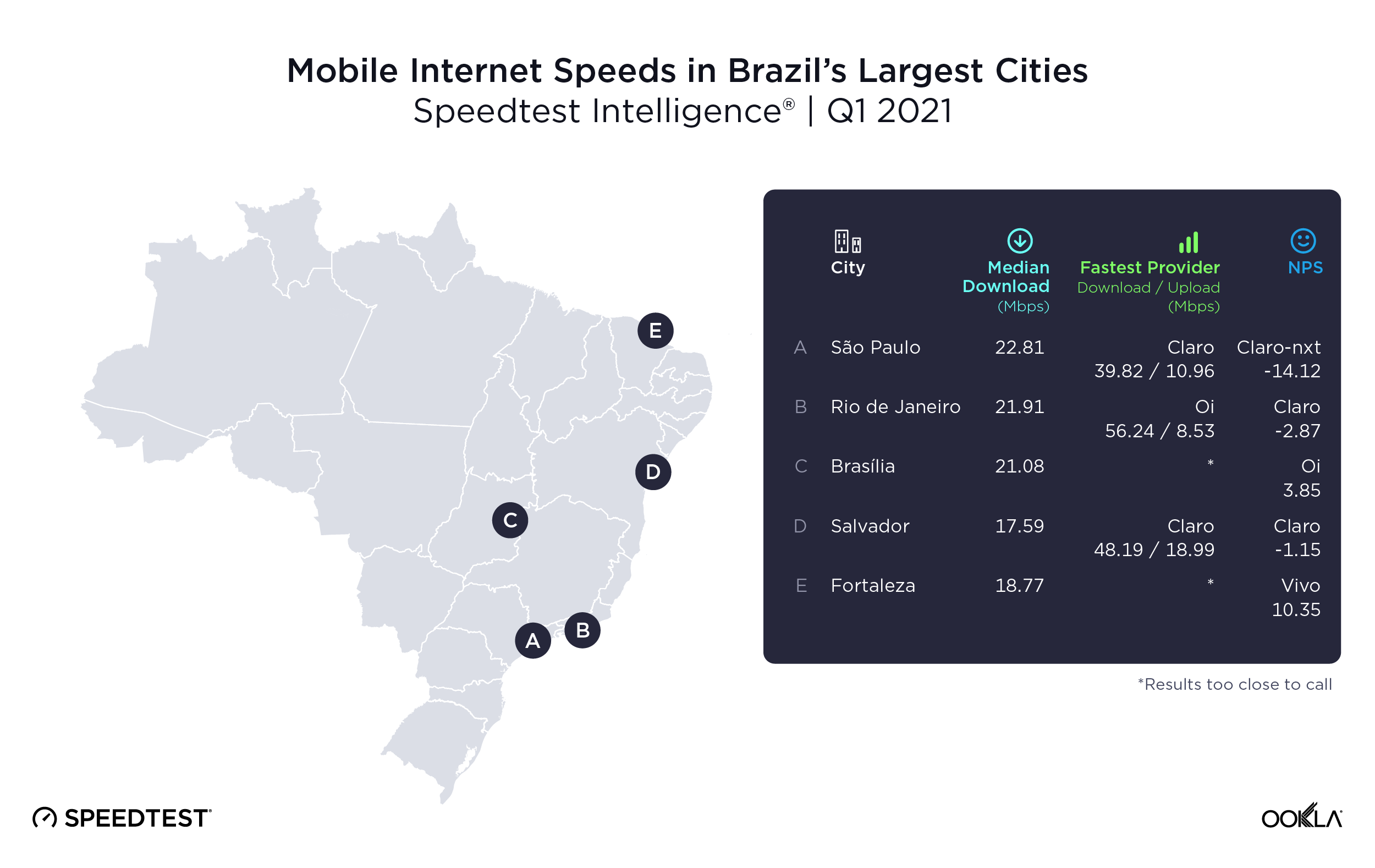
São Paulo had the fastest median mobile download speeds of Brazil’s top five most populous cities at 22.81 Mbps during Q1 2021. Rio de Janeiro was second with 21.91 Mbps, Brasília third (21.08 Mbps), Fortaleza fourth (18.77 Mbps) and Salvador fifth (17.59 Mbps).
Competition for the fastest mobile provider was intense during Q1 2021. Oi had the fastest median download speed in Rio de Janeiro at 56.24 Mbps. Claro had the fastest median download and upload speeds during Q1 2021 in Salvador (48.19 Mbps download/18.99 Mbps upload) and in São Paulo (39.82 Mbps download/10.96 Mbps upload). In Brasília and Fortaleza there was no statistically significant winner for fastest mobile download speed among Brazil’s top providers. In Brasília, Claro achieved 32.57 Mbps to Vivo’s 31.16 Mbps and Oi’s 30.24 Mbps. Oi had the fastest median upload speed in Brasília with 14.23 Mbps. In Fortaleza, Vivo achieved a median download speed of 37.64 Mbps to Claro’s 34.77 Mbps.
Consumer sentiment varies across the country mobile consumers
Speedtest Consumer Sentiment data and NPS revealed a lot about consumer sentiment in Brazil’s major cities during Q1 2021. Claro was the top-rated provider in Rio de Janeiro (-2.87) and Salvador (-1.15). Vivo was the top-rated provider in Fortaleza (10.35). Claro-nxt (owned by Claro after the Nextel merger in Q2 2021) was top rated in São Paulo (-14.12). Oi was the top-rated provider in Brasília (3.85).

Speedtest intelligence reveals Brasília had the fastest median fixed broadband download speeds among the five most populous cities in Brazil at 75.72 Mbps (21.06 Mbps upload) during Q1 2021. São Paulo was second at 60.41 Mbps, Fortaleza third (56.83 Mbps), Rio de Janeiro fourth (51.09 Mbps) and Salvador fifth (45.85 Mbps). Fortaleza had the fastest median upload speed at 34.03 Mbps.
Vivo was the fastest fixed broadband provider among top providers during Q1 2021 in Rio de Janeiro (79.22 Mbps) and São Paulo (90.08 Mbps). TIM Live was fastest in Salvador (91.41 Mbps). Oi provided the fastest fixed broadband speeds in Brasília at 89.36 Mbps. There was no statistically significant winner in Fortaleza, though Oi had a median download speed at 94.43 Mbps and Brisanet had a median download speed of 93.45 Mbps.
According to Speedtest Consumer Sentiment, these median download speeds almost mirrored consumer ratings. Vivo was the top-rated NPS provider in Rio de Janeiro and São Paulo at 3.63 and 2.25, respectively. Oi was top-rated in Brasília at -14.03. TIM Live edged out Oi in Salvador -23.93 to -24.65. And in Fortaleza, Brisanet was first at 4.72, followed by Oi at 2.28.
Faster mobile speeds are just around the corner for Brazil
Despite numerous political challenges, the Brazilian National Telecommunications Agency (Agency Nacional de Telecomunicacoes or Anatel) is inching closer to holding a massive 5G spectrum auction that is expected to take place around the end September or October. This auction aims to enable Brazilian operators to significantly boost their coverage footprint and capacity, and improve overall end user experience. Anatel will auction several ranges of spectrum:
- 700 MHz: multiple 10 MHz FDD blocks nationwide
- 3.5 GHz: two 100 MHz blocks and one 80 MHz nationwide
- 2.3 GHz: one 50 MHz block and one 40 MHz regional block
- 26 GHz (mmWave): five 400 MHz nationwide blocks and three regional blocks
Additionally, Anatel mandates that participating mobile operators deploy Standalone (SA) 5G networks by 2022 instead of relying on the Dynamic Spectrum Sharing (DSS) technology, which allows operators to use the existing 4G spectrum for both 4G and 5G operation. DSS technology is already in use by Brazilian operators, but the overall network capacity tends to be reduced due to the overhead associated with running both technologies on the same slice of spectrum. The injection of hundreds of megahertz of greenfield spectrum assets to the Brazilian mobile market promises an enhanced 5G coverage across wider geographies using the 700 MHz licenses, multi-gigabit speeds that come with 3.5 GHz and the millimeter wave, and endless opportunities for the enterprise segment of the industry.
Brazil remains an exciting market to watch and we’ll continue to monitor their internet performance for newsworthy events. If you want to learn more about Speedtest Intelligence and Speedtest Consumer Sentiment, please contact us.
A internet no Brasil está ficando mais rápida e acessível, e o 5G está no horizonte
O Brasil tornou-se cada vez mais dependente da internet para serviços bancários, negócios, telecomunicações e lazer durante a pandemia da COVID-19. No entanto, o país ficou em 49º lugar no mundo em velocidade de banda larga fixa e em 74º em velocidade móvel, de acordo com dados de abril de 2021 do Speedtest Global Index™. Na verdade, a velocidade da banda larga fixa no Brasil melhorou 69,2% em relação ao ano anterior graças aos investimentos em FTTH, elevando o país em sete posições, de 56º em abril de 2020 para 49º no Índice Global Speedtest em abril de 2021. O Brasil está à beira de uma revolução na internet, com um leilão de espectro 5G e futuros investimentos em banda larga se tornando uma prioridade. Neste artigo, analisamos o desempenho de velocidades da internet fixa e móvel, desempenho em nível estadual, avaliações de provedores, os provedores mais rápidos, bem como dados a nível municipal nas cidades mais populosas do Brasil, para saber quais partes do país já estão desfrutando de velocidades mais rápidas.
O Brasil ficou em terceiro lugar em velocidades móveis entre os maiores mercados da América Latina
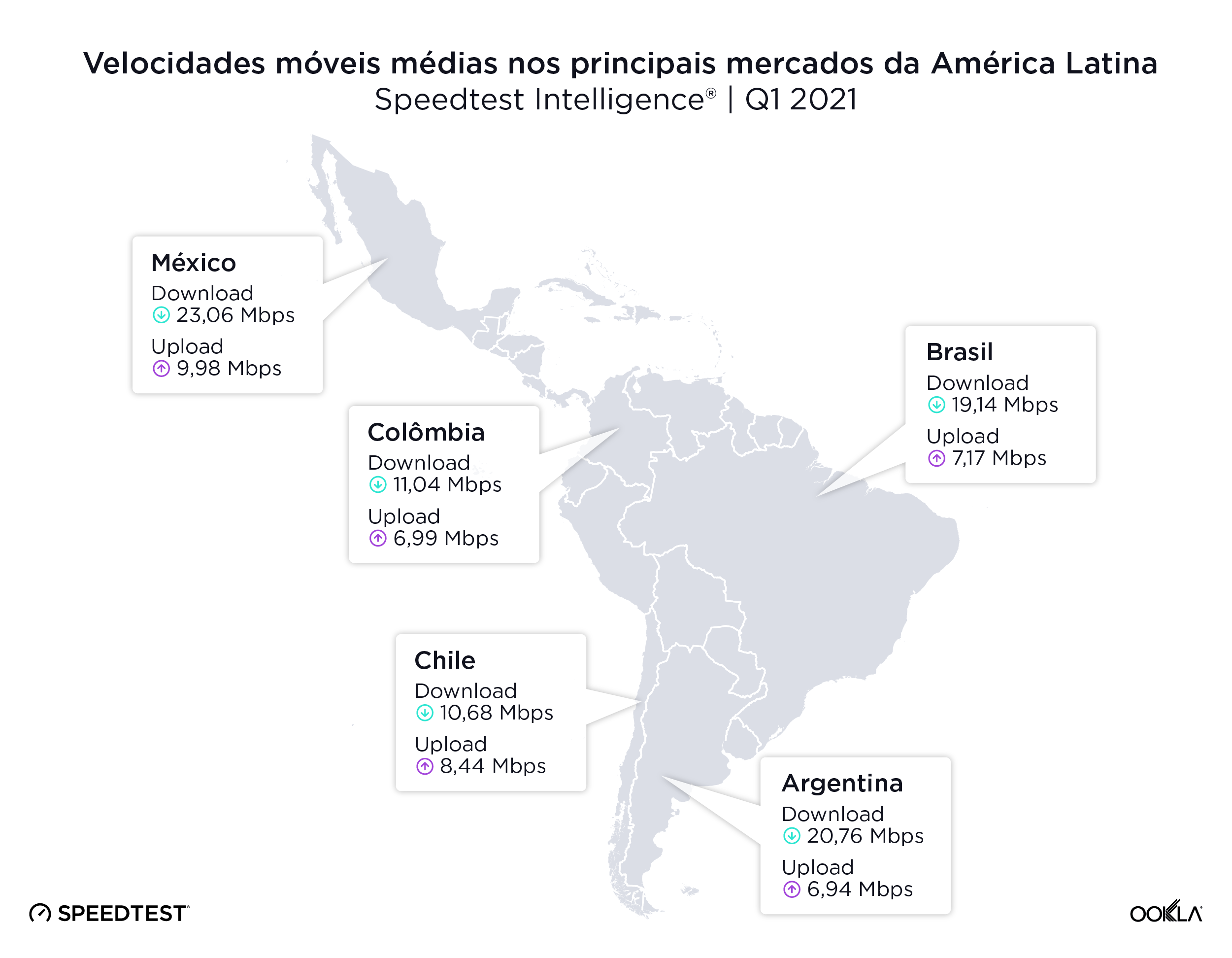
Speedtest Intelligence® revela que o Brasil ficou em terceiro lugar em desempenho médio de internet móvel entre os principais mercados regionais, com 19,14 Mbps (download) e 7,17 Mbps (upload). O México ficou em primeiro lugar na lista (23,08 Mbps de download/9,98 Mbps de upload), a Argentina em segundo (20,76 Mbps de download/6,94 Mbps de upload), a Colômbia em quarto (11,04 Mbps de download/6,99 Mbps de upload) e o Chile em quinto (10,60 Mbps de download/8,44 Mbps de upload).
O Brasil tem a segunda banda larga fixa mais rápida
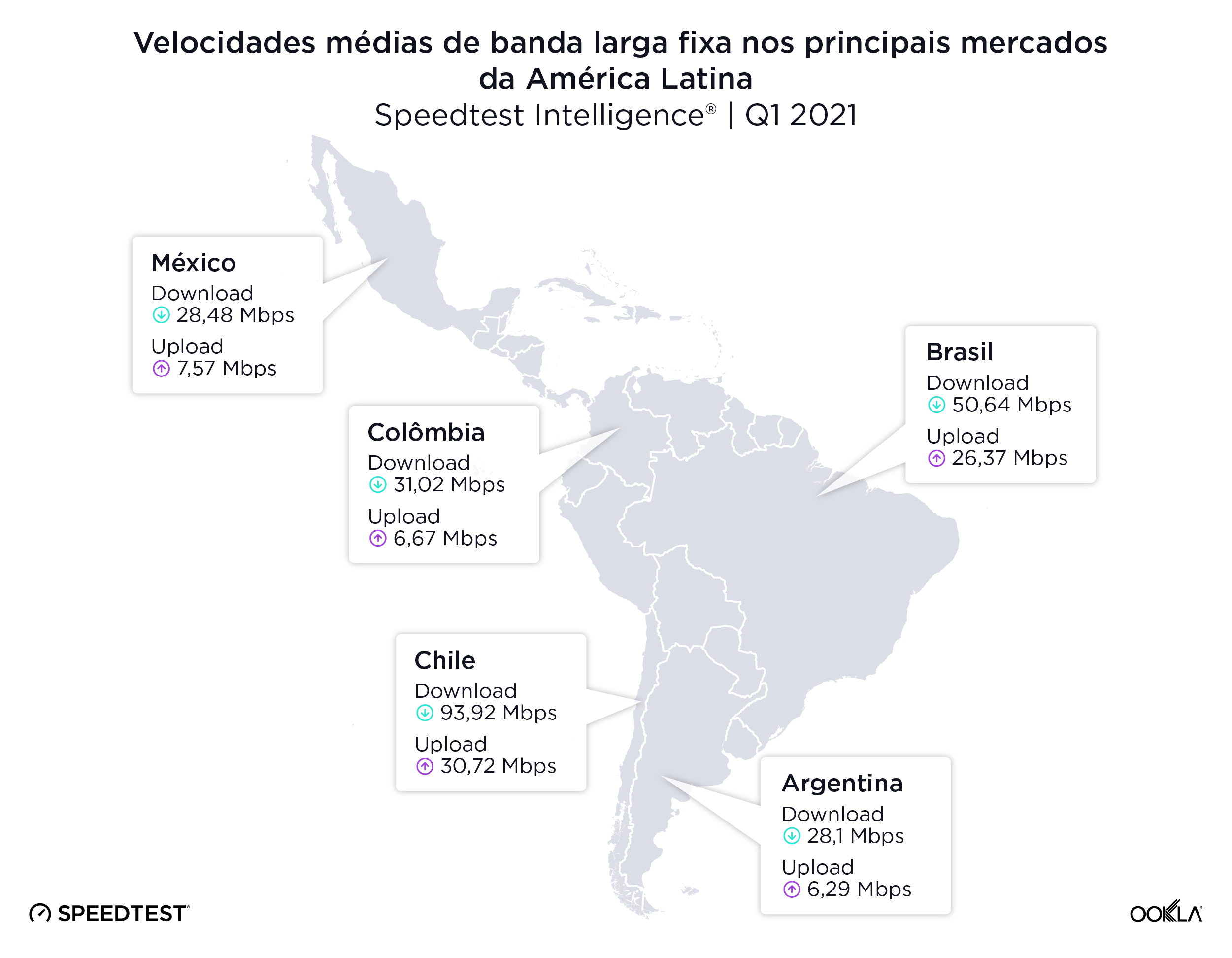
Em velocidades médias de banda larga fixa entre os principais mercados latino-americanos durante o primeiro trimestre de 2021, o Brasil ficou atrás apenas do Chile, de acordo com a Speedtest Intelligence. O Chile apresentou velocidades de 93,92 Mbps (download) e 30,72 Mbps (upload), e o Brasil chegou a 50,64 Mbps (download) e 26,37 Mbps (upload). A Colômbia ficou em terceiro (31,02 Mbps de download/6,67 Mbps de upload), o México em quarto (28,48 Mbps de download/7,57 de upload Mbps) e a Argentina em quinto (28,10 Mbps de download/6,29 Mbps de upload).
As operadoras móveis mais rápidas do Brasil estão muito à frente da concorrência
A Claro teve a velocidade média de download e upload móvel mais rápida

Durante o primeiro trimestre de 2021, a Claro teve a velocidade média de download e upload móvel mais rápida do Brasil entre [os principais provedores — uma operadora ou ISP responsável por 3% ou mais do total de amostras de teste no mercado para todo o período] (/insights/blog/how-ookla-ensures-accurate-reliable-data-2021/#top-providers) — a 27,54 Mbps (download) e 8,77 Mbps (upload). A Vivo ficou em segundo (19,53 Mbps de download/6,80 de upload), a TIM em terceiro (14,88 Mbps de download/6,55 Mbps de upload) e a Oi em quarto (10,93 Mbps de download/4,90 Mbps de upload).
Esperamos que as velocidades móveis do Brasil continuem a acelerar à medida que a tecnologia 5G se torna mais acessível e os provedores de rede invistam em mais implantações 5G. O leilão de espectro que acontecerá em breve deve melhorar as ofertas 5G para os consumidores e acelerar drasticamente a experiência móvel dos brasileiros.
O desempenho da rede é muitas vezes um fator importante para a experiência do cliente, mas não é o único que as pessoas levam em consideração ao avaliar seus provedores de internet. Usamos os dados de Speedtest Consumer Sentiment™ com os rankings de cinco estrelas e Net Promoter Score (NPS) para entender melhor como o desempenho de rede afetou a satisfação de clientes no Brasil durante o primeiro trimestre de 2021.
De acordo com dados de opinião do consumidor, as operadoras de rede móvel do Brasil obtiveram a seguinte pontuação entre os consumidores durante o primeiro trimestre de 2021: A Claro teve a melhor pontuação de NPS no Brasil com -6,17. A Vivo foi a segunda (-13,32), a TIM a terceira (-17,82) e a Oi a quarta (-30,51). Essas pontuações se correlacionam diretamente ao desempenho móvel entre os principais provedores do Brasil, embora possa haver uma série de outros fatores a serem considerados nessas pontuações.
A Vivo teve o desempenho de banda larga fixa mais rápido
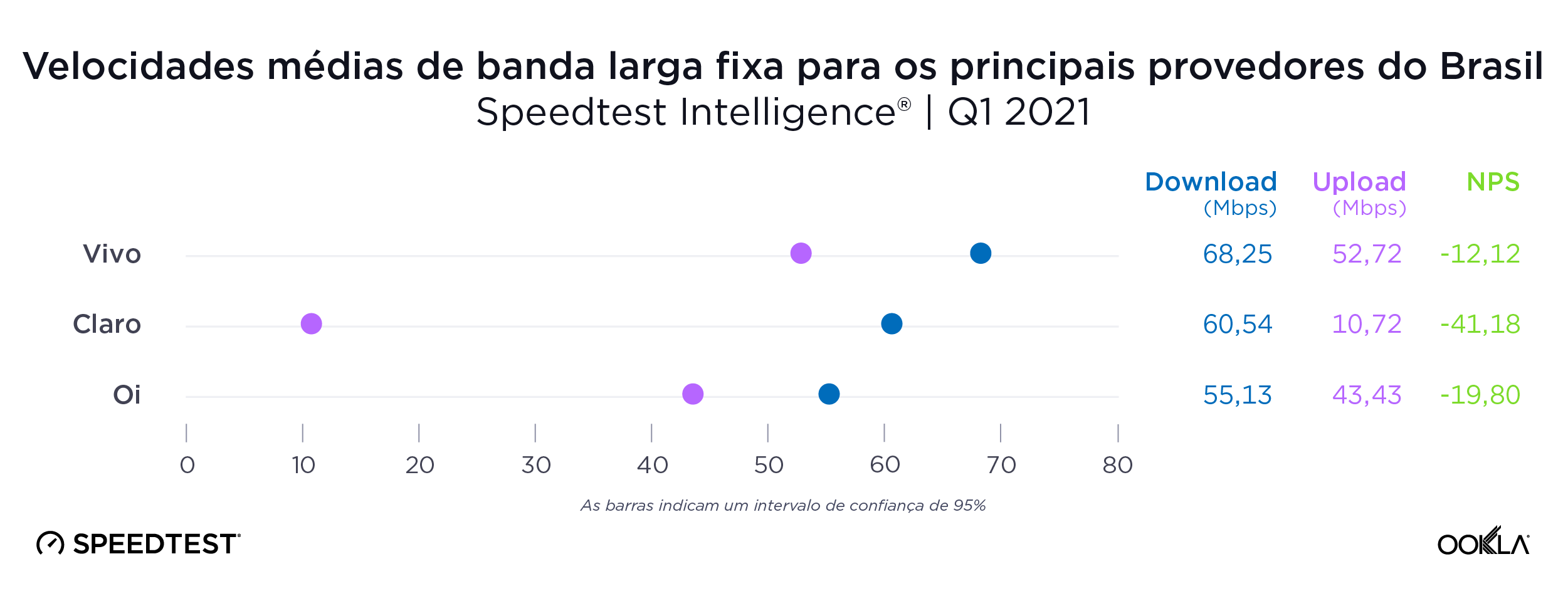
Os principais provedores de banda larga fixa do Brasil competiram em uma verdadeira corrida para ver quem era o provedor mais rápido no Brasil durante o primeiro trimestre de 2021. A Vivo atingiu a velocidade média de download e upload mais rápida do Brasil com 68,25 Mbps (download) e 52,72 Mbps (upload). A Claro foi a segunda (60,54 Mbps de download/10,72 Mbps de upload) e a Oi a terceira (55,13 Mbps de download/43,43 Mbps de upload).
Os dados do Speedtest Consumer Sentiment e NPS revelaram que a Vivo teve a melhor pontuação para banda larga fixa entre os principais provedores durante o primeiro trimestre de 2021 em -12,12. A Oi foi a segunda, com -19,80, e a Claro a terceira (-41,18).
O Distrito Federal teve a velocidade média de download de banda larga fixa mais rápida, enquanto o Rio Grande do Sul a velocidade de download móvel mais rápida
A maioria dos estados brasileiros atingiu velocidades médias de download entre 42,00 Mbps e 52,00 Mbps em banda larga fixa

O Distrito Federal alcançou a velocidade média de banda larga fixa mais rápida entre os estados brasileiros com 75,71 Mbps durante o primeiro trimestre de 2021. Roraima ficou em segundo (60,72 Mbps) e São Paulo em terceiro (57,48 Mbps). Embora não houvesse nenhum estado estatisticamente mais lento no Brasil, Sergipe e Bahia registraram as velocidades medianas mais lentas em 30,44 Mbps e 30,92 Mbps, respectivamente. Alagoas e Pernambuco estiveram um pouco mais rápidos, com 32,90 Mbps e 36,50 Mbps, respectivamente.
Durante o mesmo período, não houve um vencedor único estatisticamente para a velocidade média de upload mais rápida em banda larga fixa, mas Roraima alcançou 43,43 Mbps, Amapá 42,34 Mbps e Piauí 39,24 Mbps. As velocidades médias de upload mais lentas entre os estados brasileiros foram em Sergipe (15,92 Mbps), Alagoas (19,87 Mbps) e Amazonas (20,26 Mbps).
O Rio Grande do Sul tem a velocidade média de download móvel mais rápida
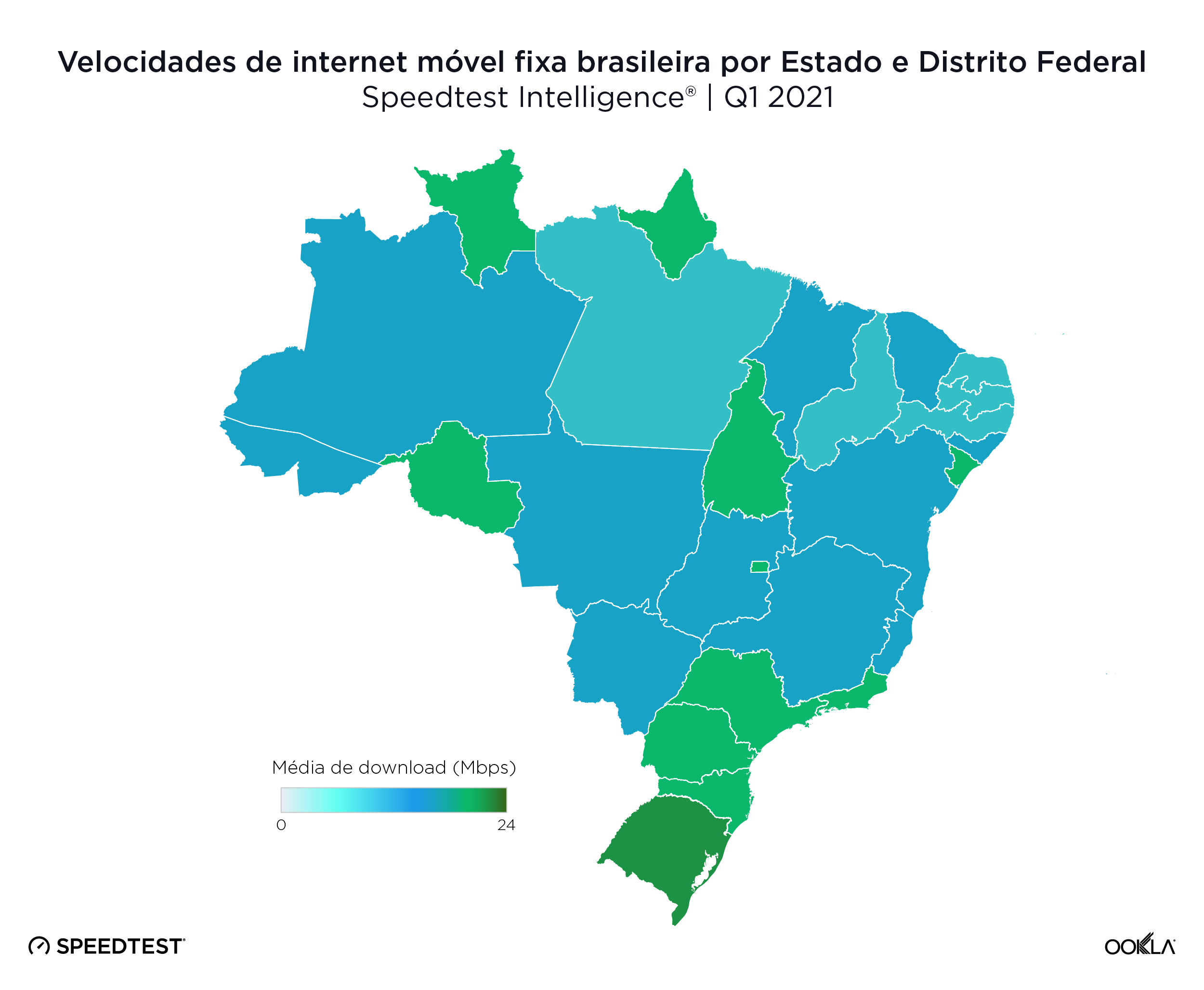
O Rio Grande do Sul teve a velocidade média de download móvel mais rápida entre os estados brasileiros durante o primeiro trimestre de 2021 alcançando 23,31 Mbps. Embora não houvesse um segundo colocado estatístico, o Rio de Janeiro registrou 21,10 Mbps, seguido por: Distrito Federal (21,08 Mbps), São Paulo (21,00 Mbps), Paraná (20,64 Mbps), Roraima (20,51 Mbps) e Santa Catarina (20,42 Mbps) . O estado com a velocidade média de upload mais lenta no Brasil foi a Paraíba, com 13,74 Mbps.
Não houve vencedor estatisticamente significativo para velocidade de upload entre os estados do Brasil, embora Roraima tivesse um upload médio de 9,38 Mbps, Distrito Federal 8,90 Mbps e Rondônia 8,47 Mbps.
São Paulo teve as velocidades móveis mais rápidas
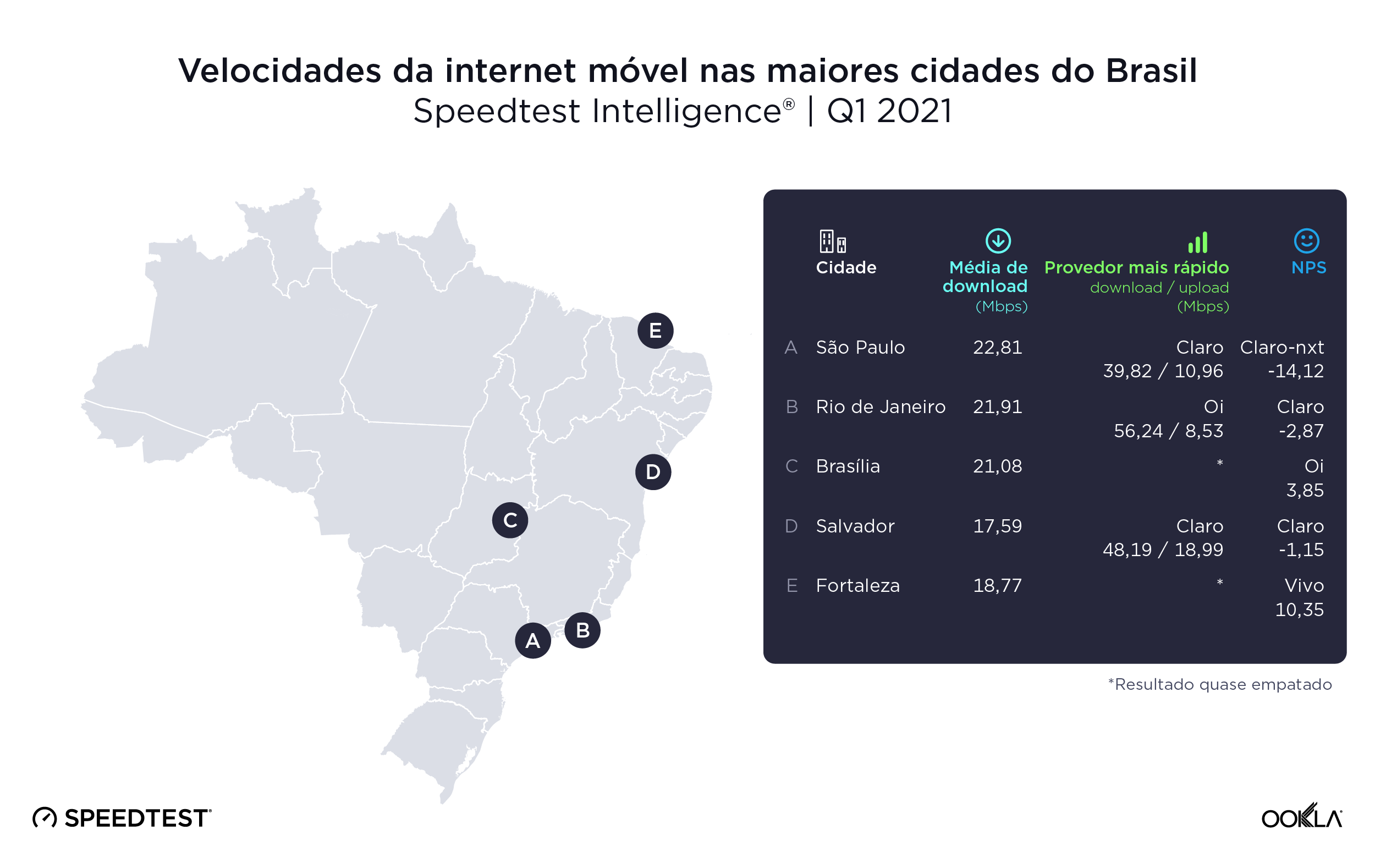
São Paulo teve a velocidade média de download de celular mais rápida das cinco cidades mais populosas do Brasil, com 22,81 Mbps durante o primeiro trimestre de 2021. O Rio de Janeiro ficou em segundo lugar com 21,91 Mbps, Brasília em terceiro (21,08 Mbps), Fortaleza em quarto (18,77 Mbps) e Salvador em quinto (17,59 Mbps).
A competição pelo operador móvel mais rápido por cidade foi intensa durante o primeiro trimestre de 2021. A Oi teve a velocidade média de download mais rápida do Rio de Janeiro, 56,24 Mbps. A Claro teve as velocidades médias de download e upload mais rápidas durante o primeiro trimestre de 2021 em Salvador (48,19 Mbps de download/18,99 Mbps de upload) e em São Paulo (39,82 Mbps de download/10,96 Mbps de upload). Em Brasília e Fortaleza, não houve vencedor estatisticamente significativo para a velocidade de download móvel mais rápida entre os principais provedores do Brasil. Em Brasília, a Claro atingiu 32,57 Mbps, a Vivo atingiu 31,16 Mbps e a Oi, 30,24 Mbps. A Oi teve a velocidade média de upload mais rápida de Brasília, com 14,23 Mbps. Em Fortaleza, a Vivo atingiu uma velocidade média de download de 37,64 Mbps enquanto a Claro alcançou 34,77 Mbps.
O sentimento do consumidor varia entre os consumidores de celulares do país
Os dados do Speedtest Consumer Sentiment e de NPS revelaram muito sobre o sentimento do consumidor nas principais cidades do Brasil durante o primeiro trimestre de 2021. A Claro foi a provedora com melhor classificação no Rio de Janeiro (-2,87) e em Salvador (-1,15). A Vivo foi a operadora mais bem avaliada em Fortaleza (10,35). A Claro-nxt (de propriedade da Claro, após a fusão com a Nextel no segundo trimestre de 2021) foi a mais bem avaliada em São Paulo (-14,12). A Oi foi a provedora mais bem avaliada em Brasília (3,85).
Brasília teve a velocidade média de download de banda larga fixa mais rápida
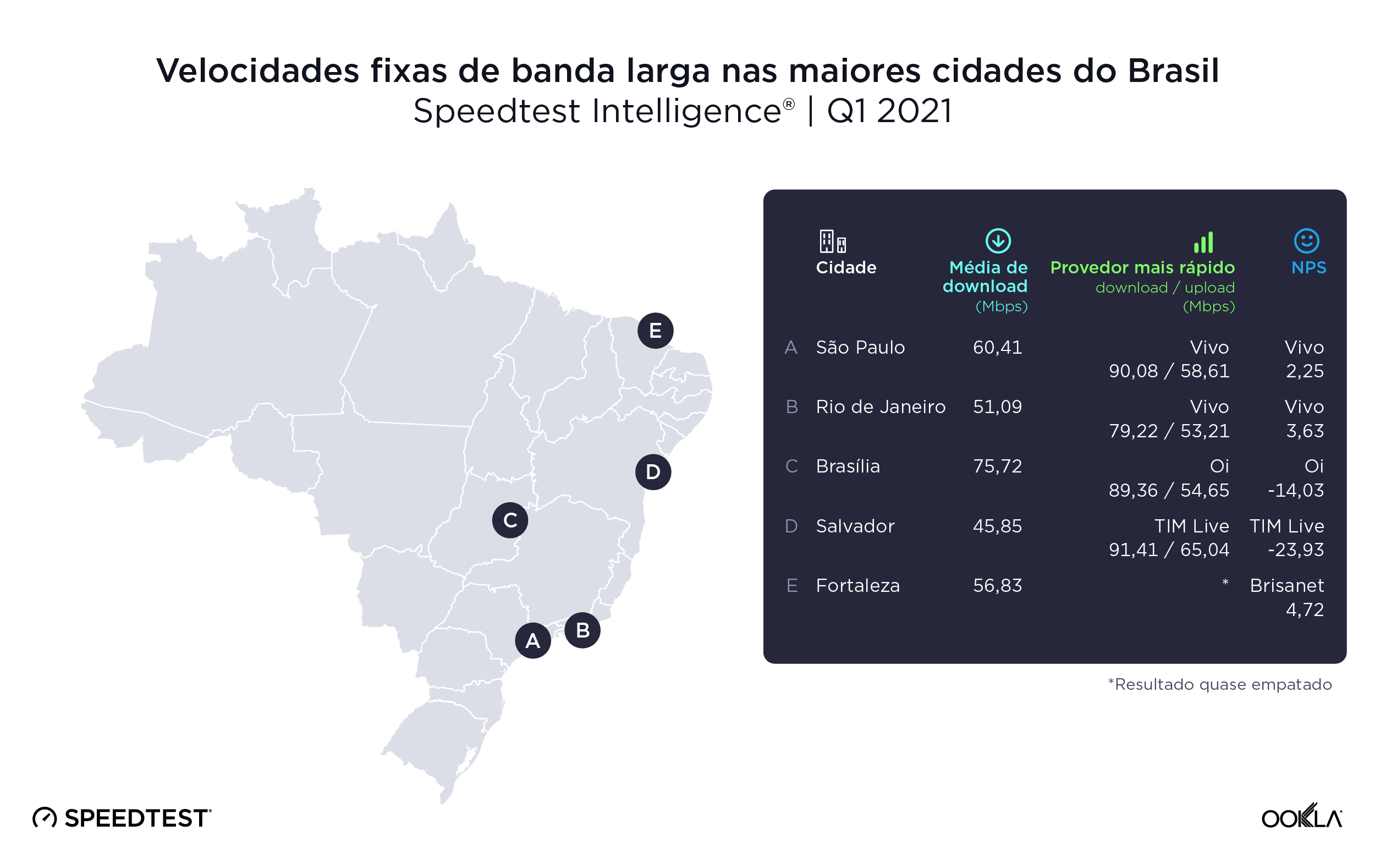
O Speedtest Intelligence revela que Brasília teve a velocidade média de download de banda larga fixa mais rápida entre as cinco cidades mais populosas do Brasil, alcançando 75,72 Mbps (upload de 21,06 Mbps) durante o primeiro trimestre de 2021. São Paulo ficou em segundo lugar com 60,41 Mbps, Fortaleza em terceiro (56,83 Mbps), Rio de Janeiro em quarto (51,09 Mbps) e Salvador em quinto (45,85 Mbps). Fortaleza teve a velocidade média de upload mais rápida, com 34,03 Mbps.
A Vivo foi o provedor de banda larga fixa mais rápido entre os principais provedores durante o primeiro trimestre de 2021 no Rio de Janeiro (79,22 Mbps) e São Paulo (90,08 Mbps). A TIM Live foi o serviço mais rápido em Salvador (91,41 Mbps). A Oi forneceu as velocidades de banda larga fixa mais rápidas de Brasília, 89,36 Mbps. Não houve primeiro colocado estatisticamente significativo em Fortaleza, embora a Oi tenha apresentado uma velocidade média de download de 94,43 Mbps e a Brisanet uma velocidade média de download de 93,45 Mbps.
De acordo com o Speedtest Consumer Sentiment, essas velocidades médias de download em sua maioria refletiram as avaliações dos consumidores. A Vivo foi o provedor com NPS de melhor classificação no Rio de Janeiro e São Paulo com 3,63 e 2,25, respectivamente. A Oi foi a melhor colocada em Brasília, com -14,03. A TIM Live venceu a Oi em Salvador -23,93 para -24,65. E em Fortaleza, a Brisanet ficou em primeiro com 4,72, seguida da Oi com 2,28.
Velocidades móveis mais rápidas estão chegando no Brasil
Apesar de vários desafios políticos, a Agência Nacional de Telecomunicações do Brasil (ou Anatel) está prestes a realizar um leilão de espectro 5G massivo que deve ocorrer no final de setembro ou outubro. Esse leilão visa permitir que as operadoras brasileiras aumentem significativamente presença e capacidade de cobertura e melhorem a experiência geral do usuário final. A Anatel vai leiloar várias faixas de espectro:
- 700 MHz: vários blocos FDD de 10 MHz em todo o país
- 3,5 GHz: dois blocos de 100 MHz e um de 80 MHz em todo o país
- 2,3 GHz: um bloco de 50 MHz e um bloco regional de 40 MHz
- 26 GHz (mmWave): cinco blocos de 400 MHz em todo o país e três blocos regionais
Além disso, a Anatel exige que as operadoras móveis participantes implantem redes 5G autônomas (SA) até 2022, em vez de depender da tecnologia de compartilhamento dinâmico de espectro (DSS), que permite às operadoras usar o espectro 4G existente para operação 4G e 5G. A tecnologia DSS já está em uso pelas operadoras brasileiras, mas a capacidade geral da rede tende a ser reduzida diante da sobrecarga associada à execução de ambas as tecnologias na mesma fatia do espectro. A entrada de centenas de megahertz de ativos de espectro Greenfield para o mercado móvel brasileiro promete uma cobertura 5G aprimorada em áreas geográficas mais amplas usando as licenças de 700 MHz, velocidades multigigabit que vêm com 3,5 GHz, bem como a onda milimétrica e oportunidades infinitas para o segmento empresarial da indústria.
O Brasil continua sendo um mercado animador de se observar e continuaremos monitorando o desempenho dele na internet em relação aos eventos de interesse jornalístico. Se você quiser saber mais sobre Speedtest Intelligence e Speedtest Consumer Sentiment, entre em contato conosco.


